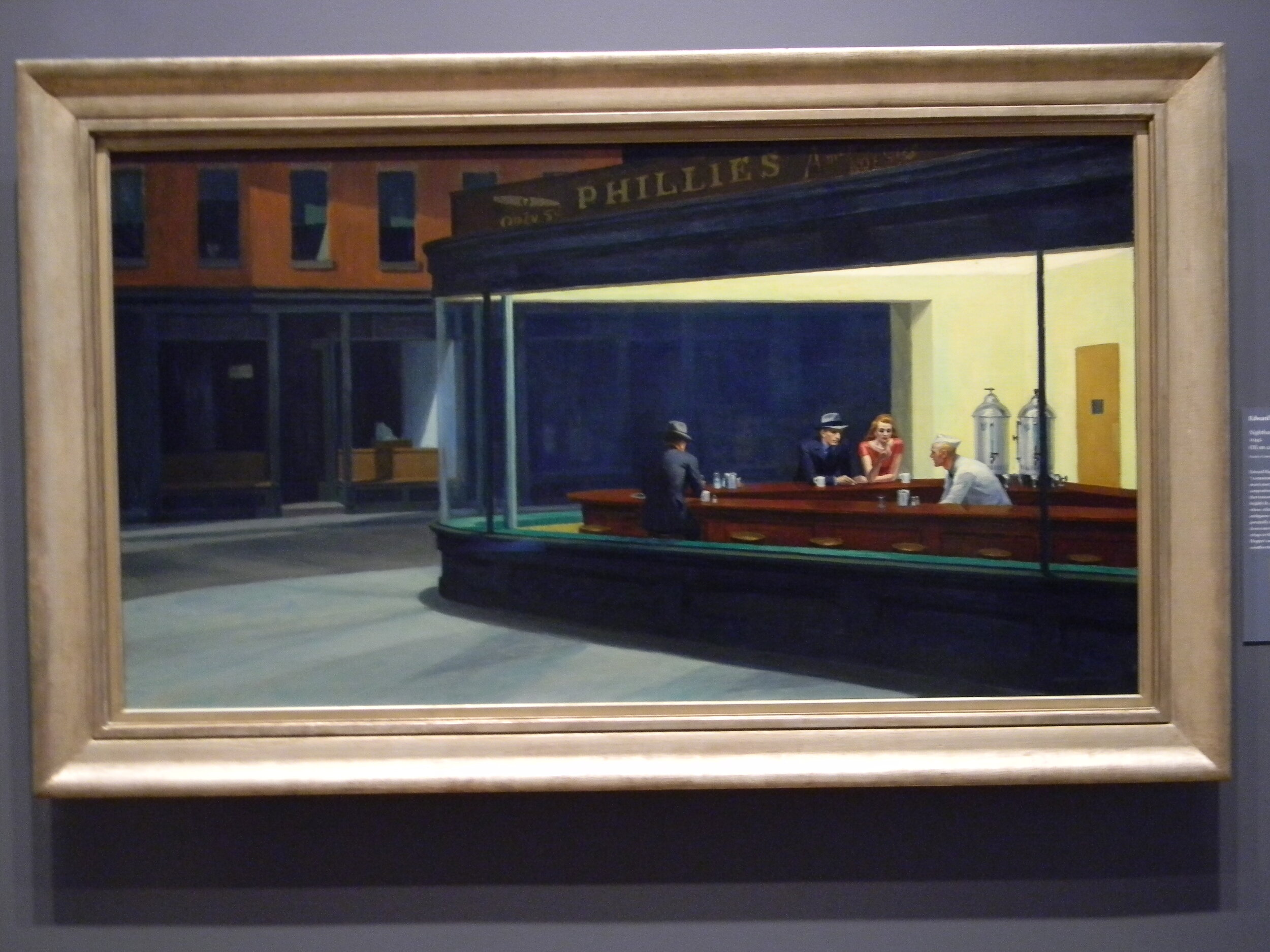
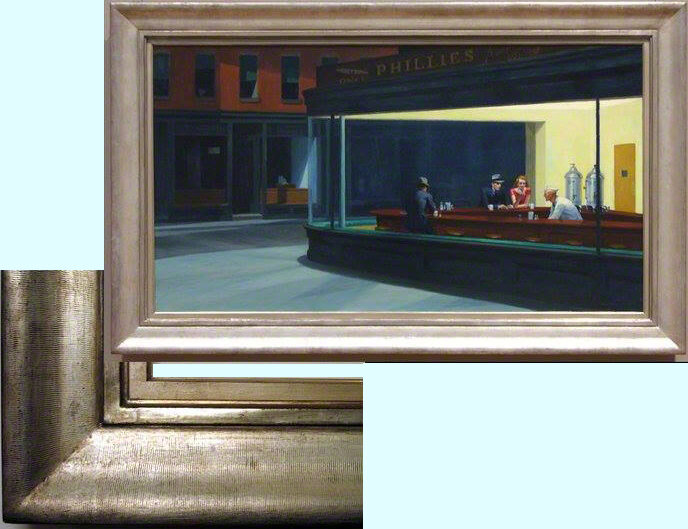
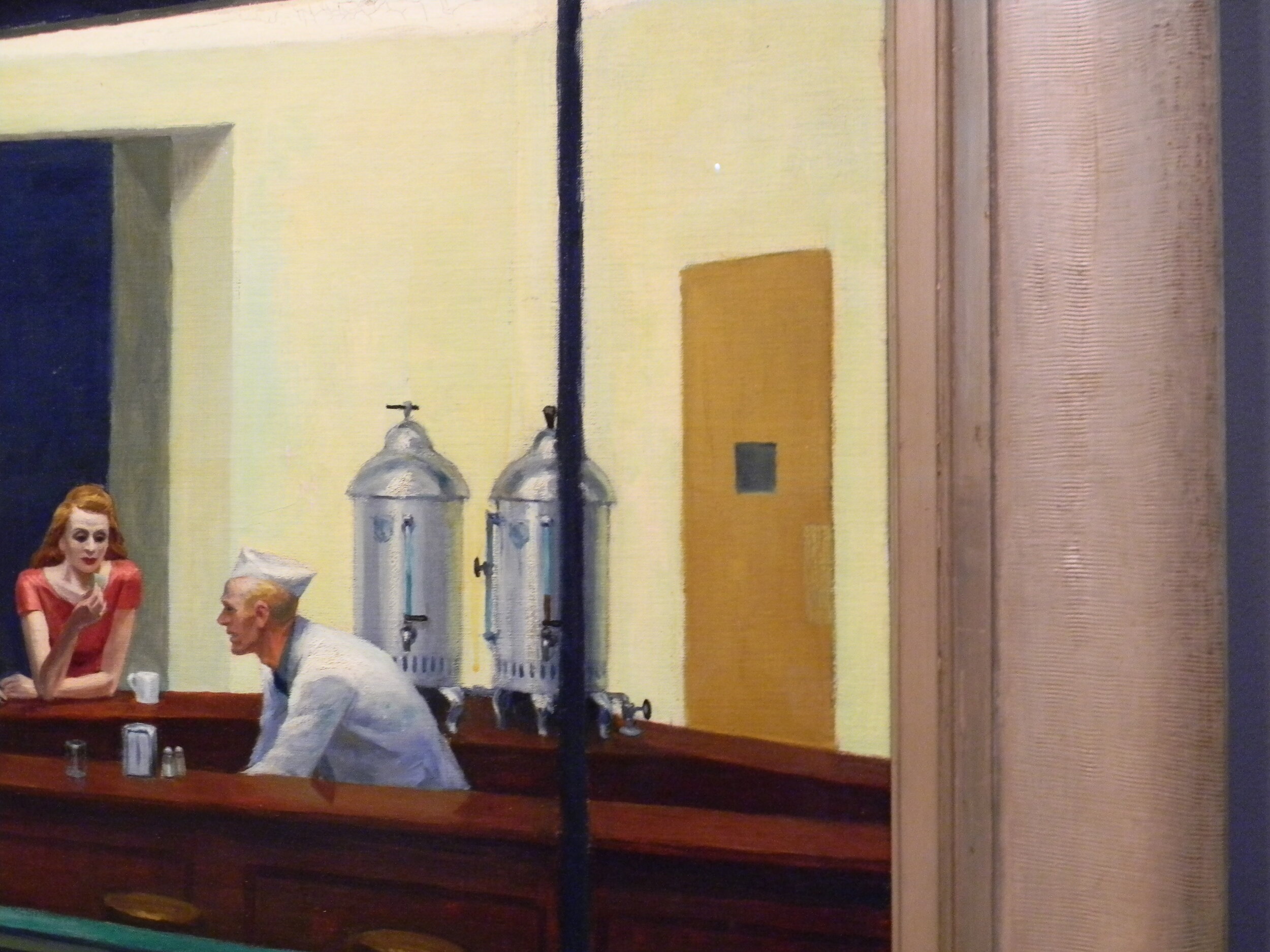
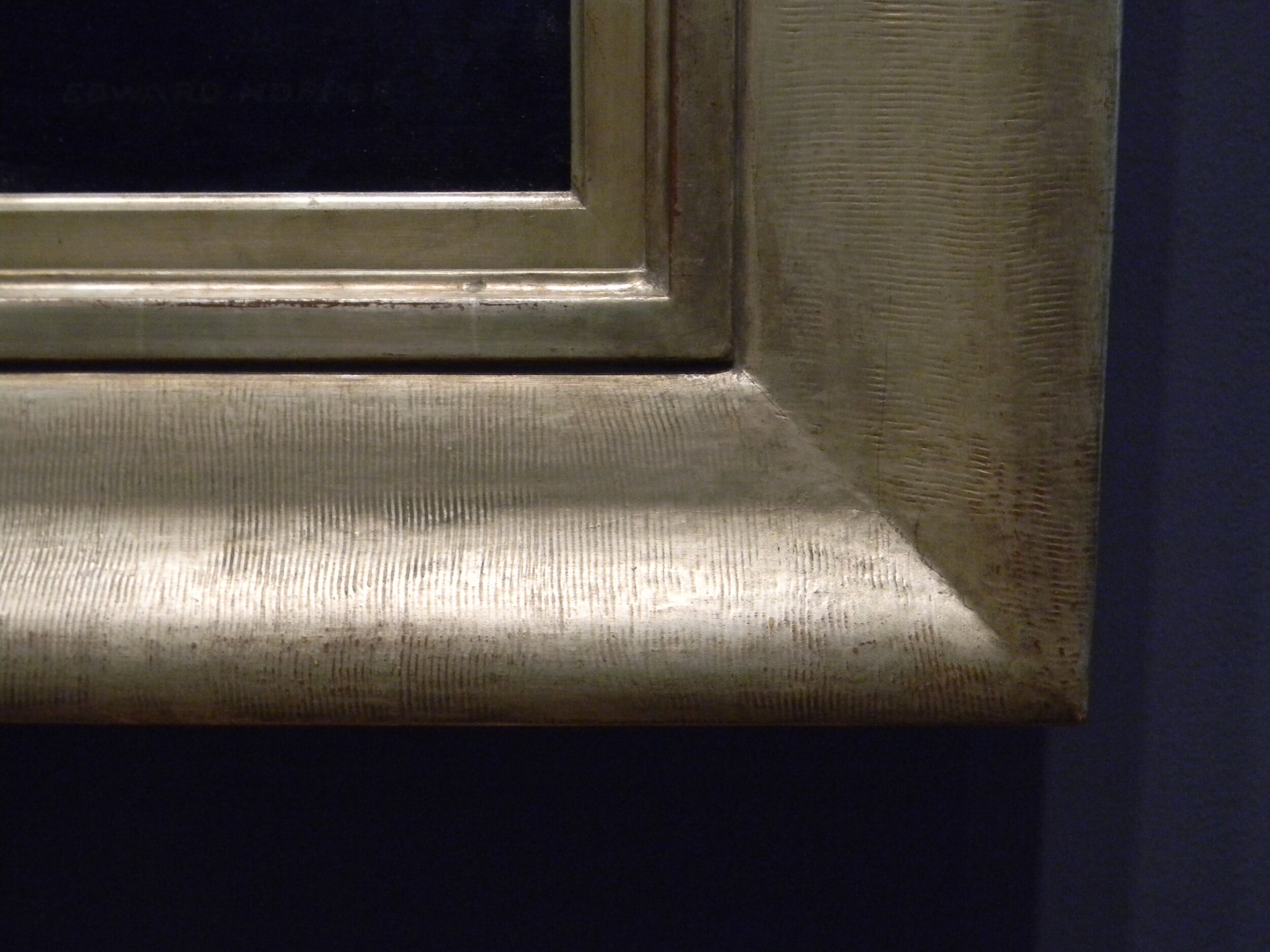

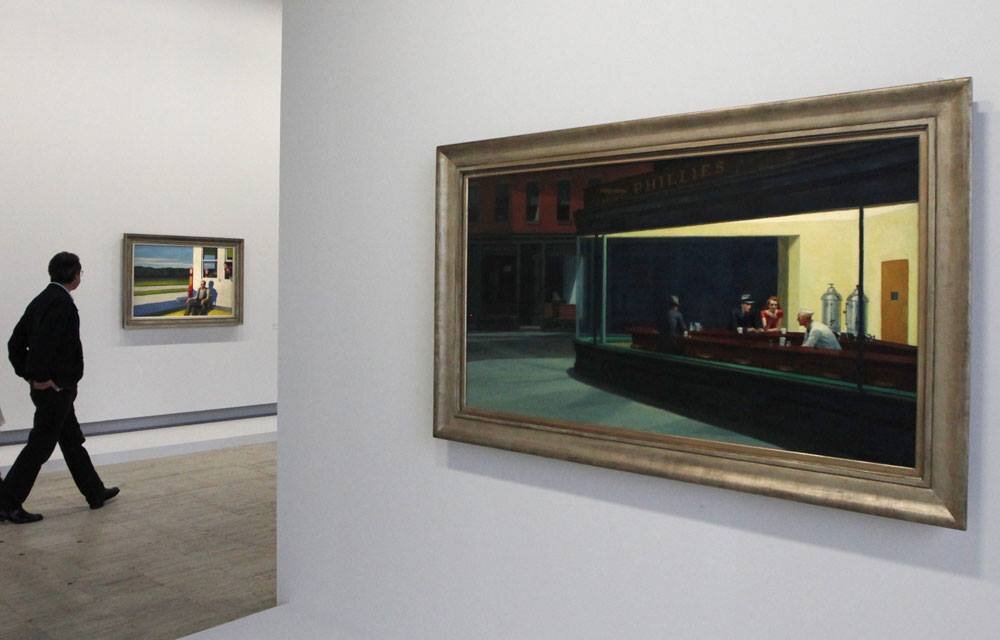
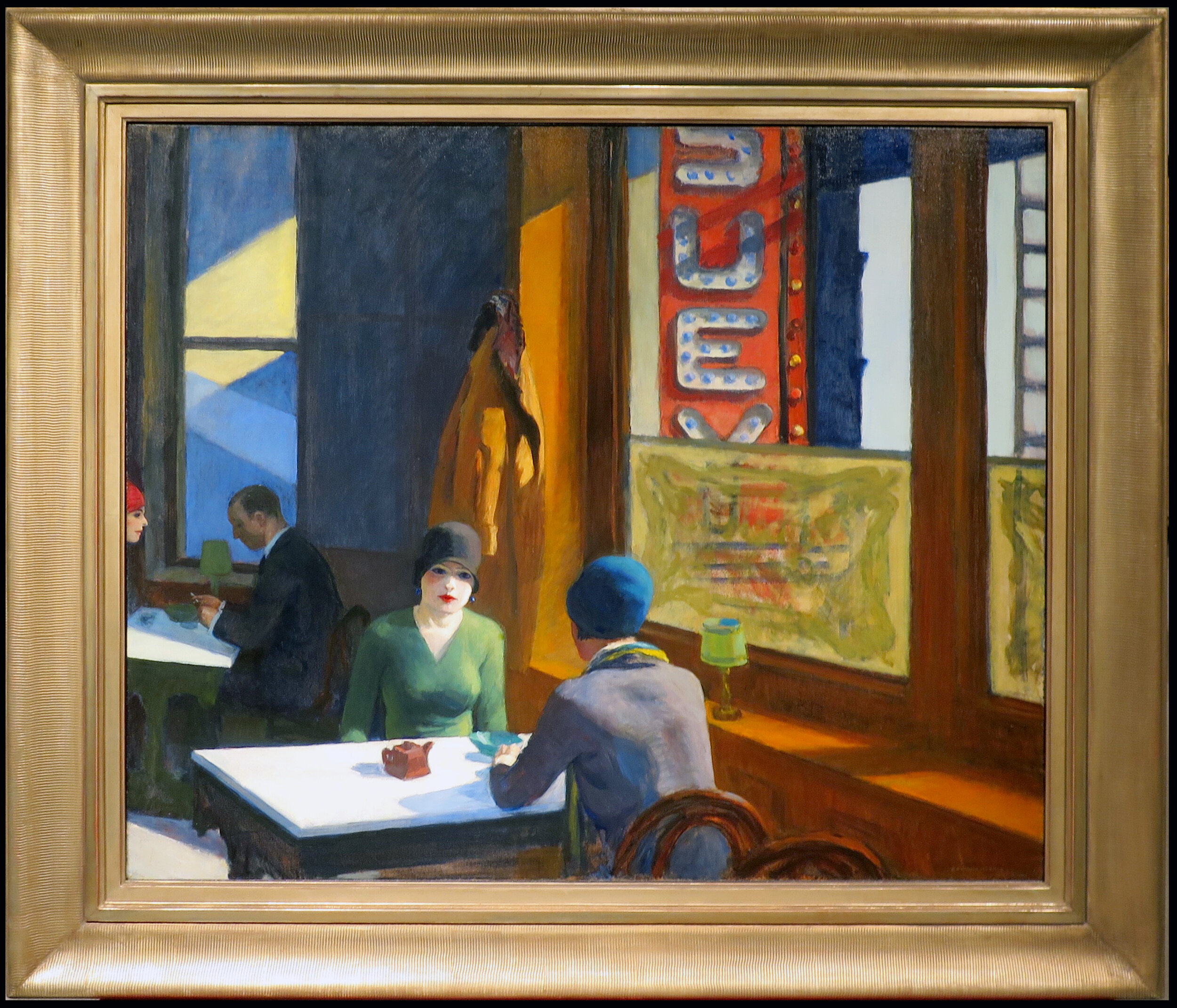
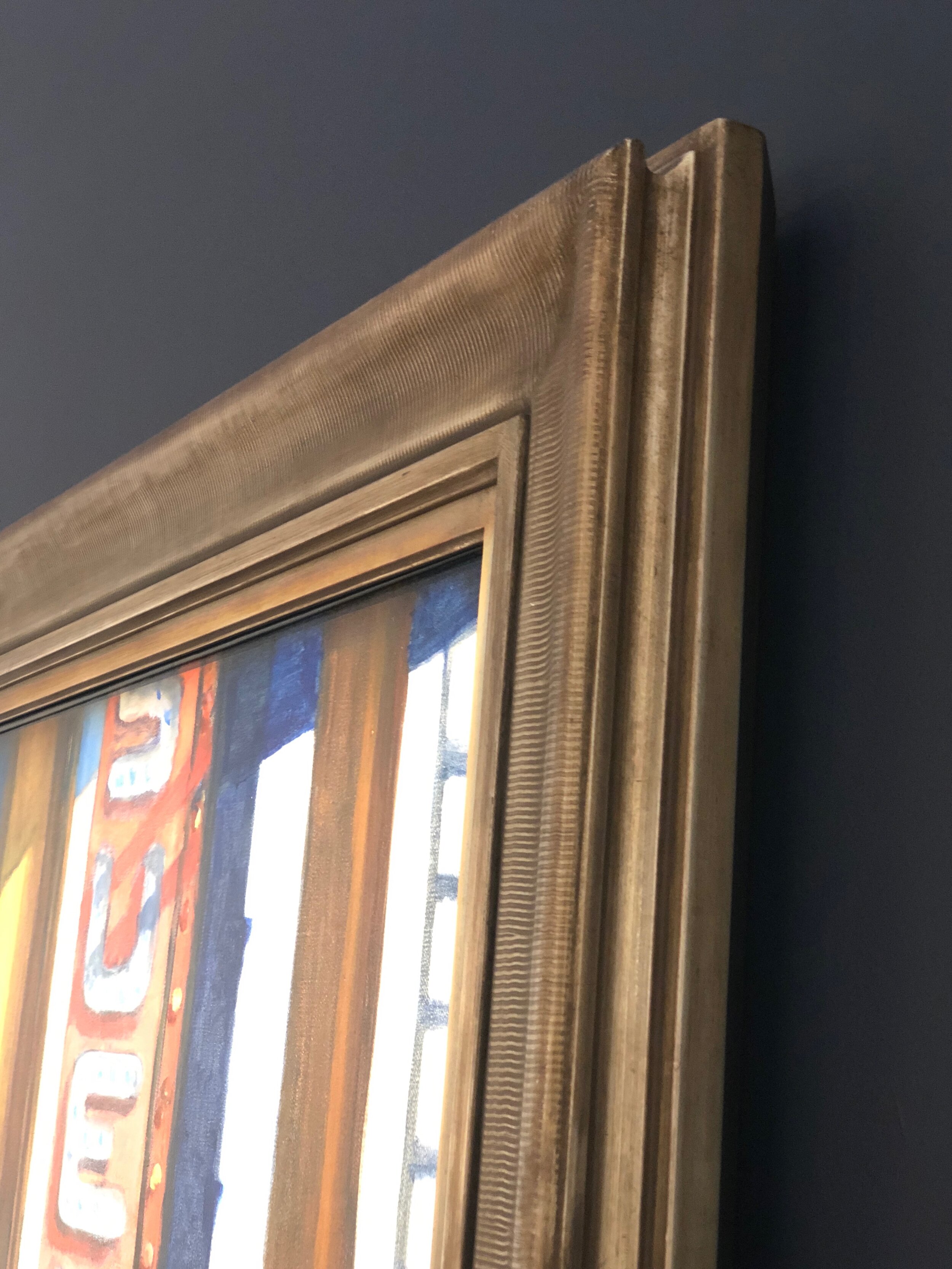
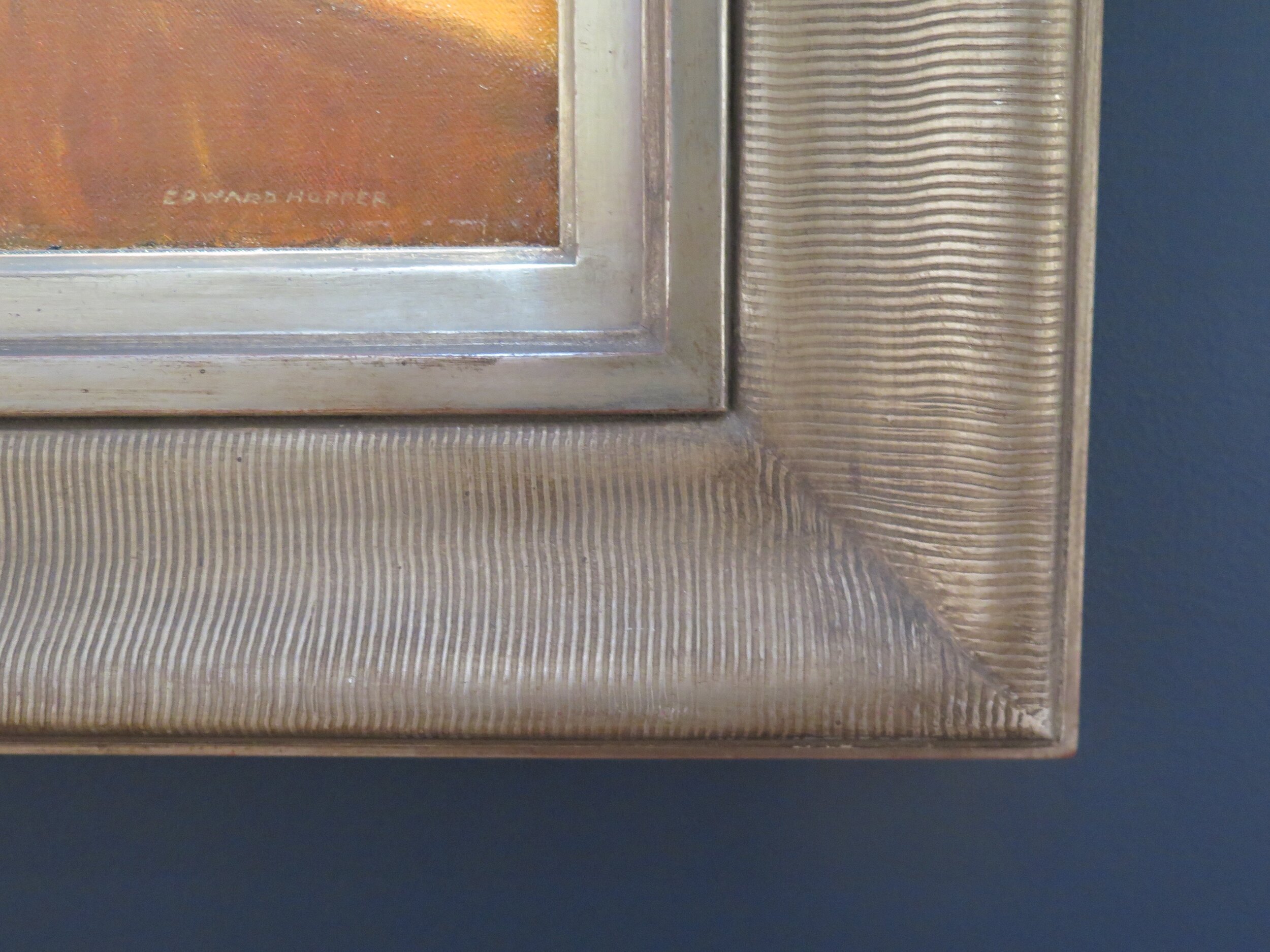
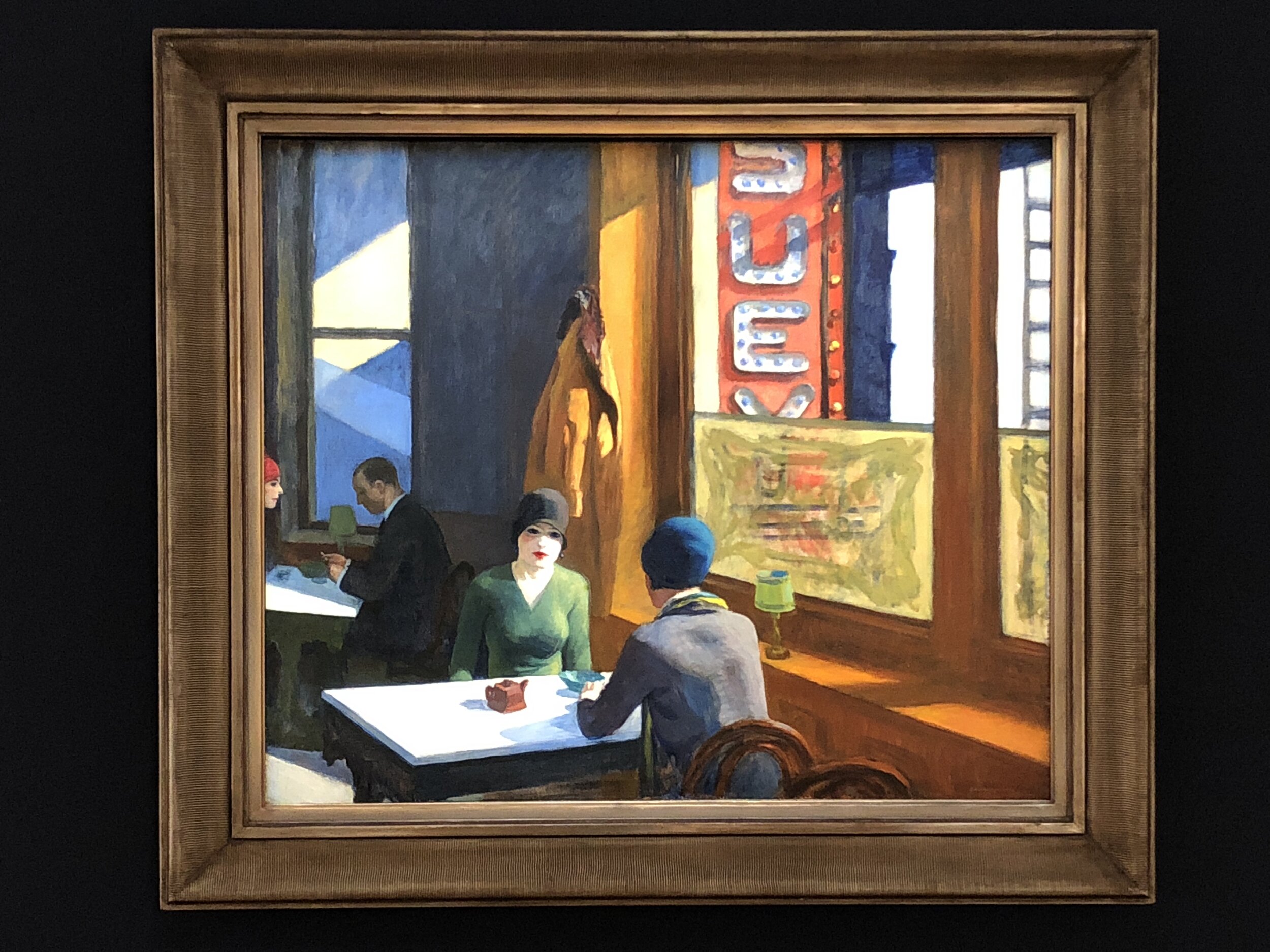
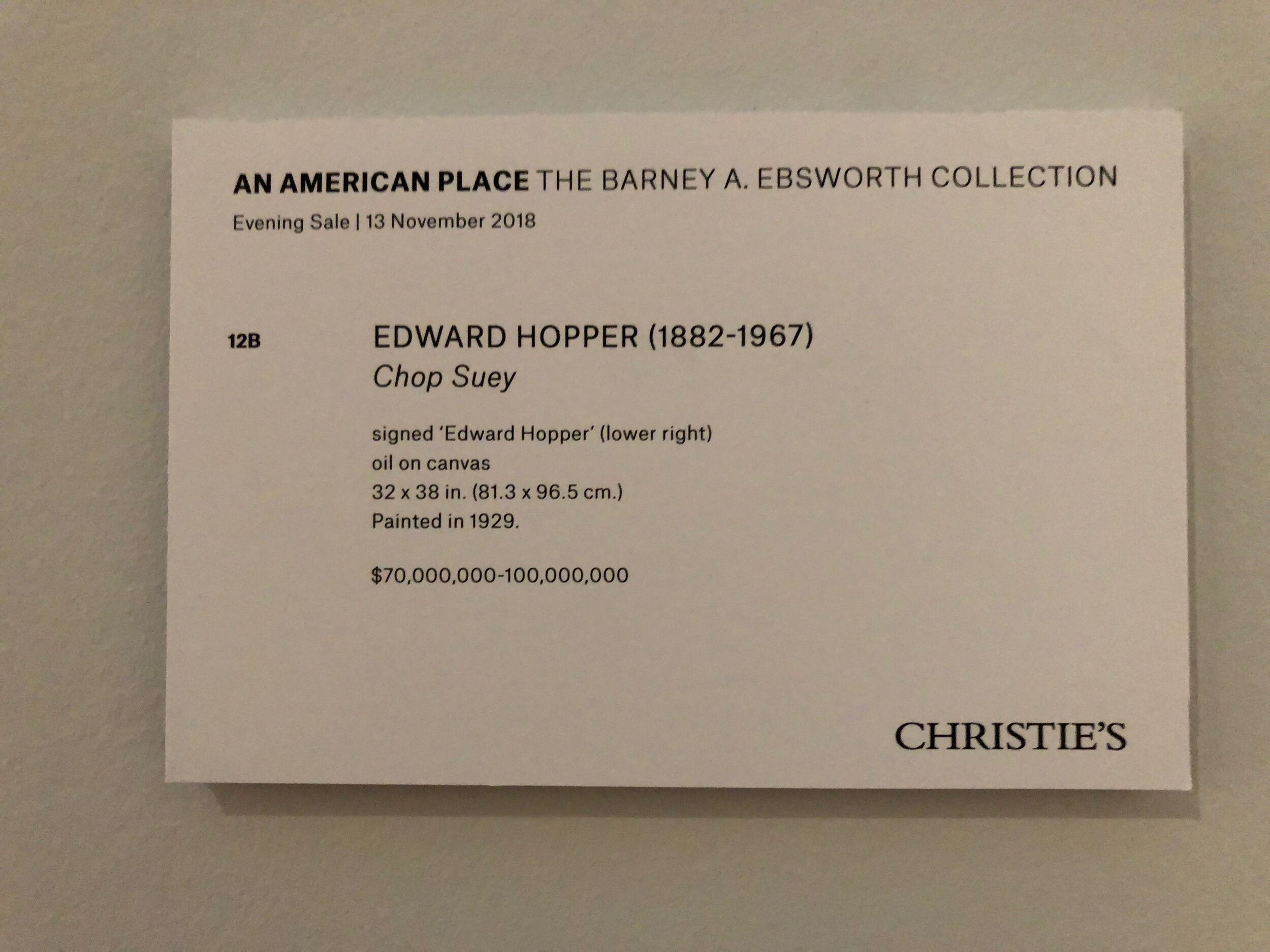
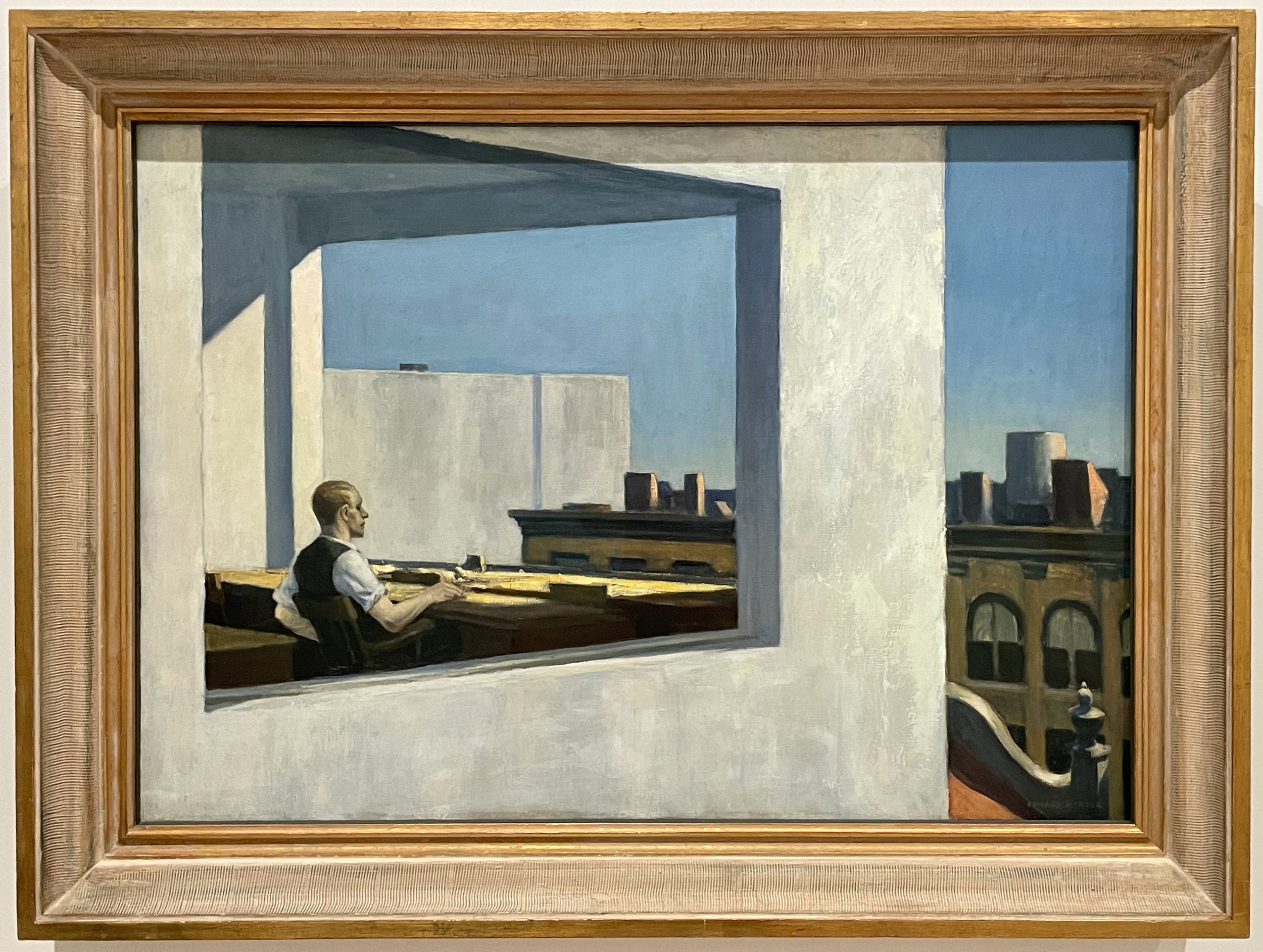
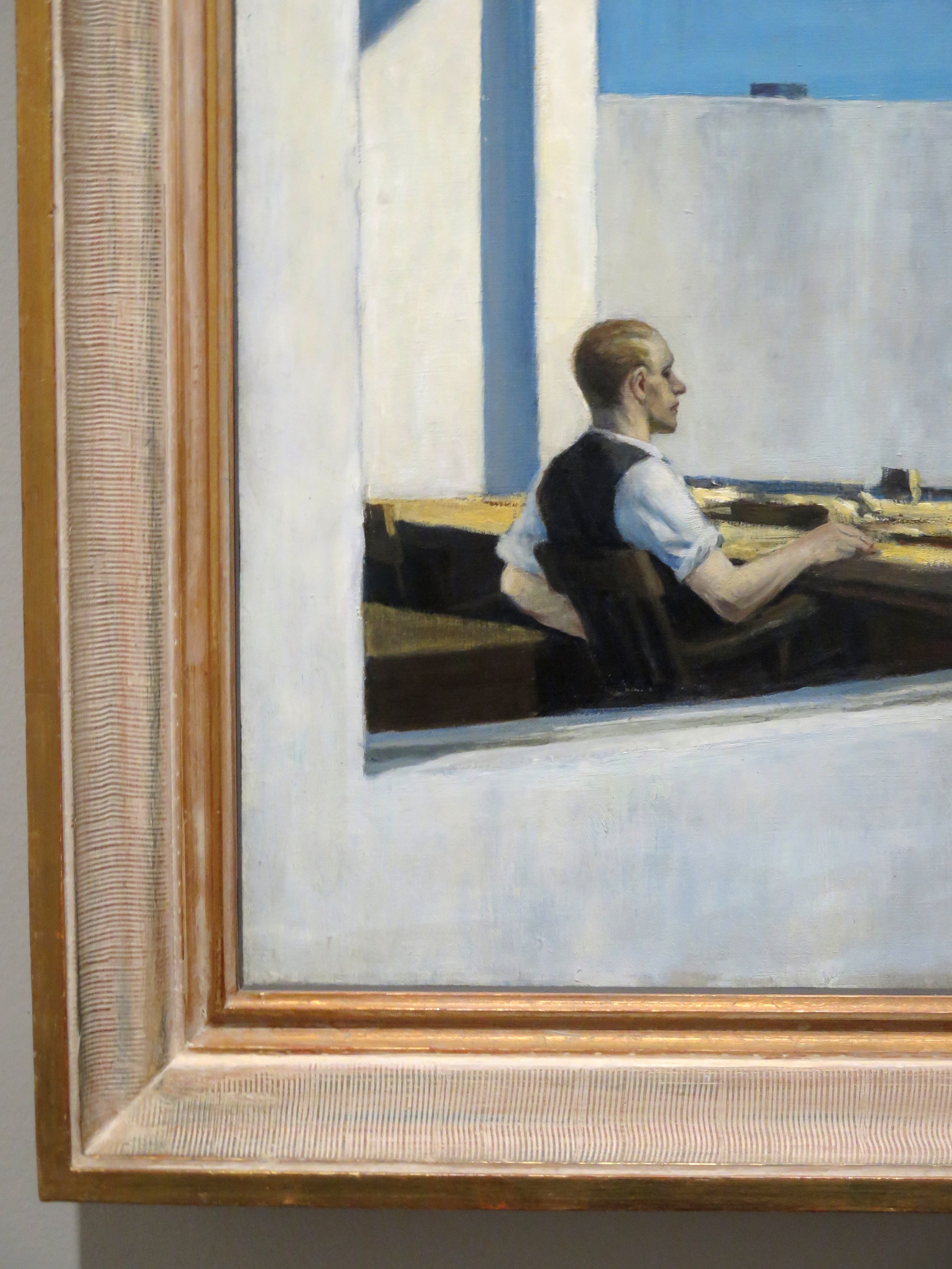
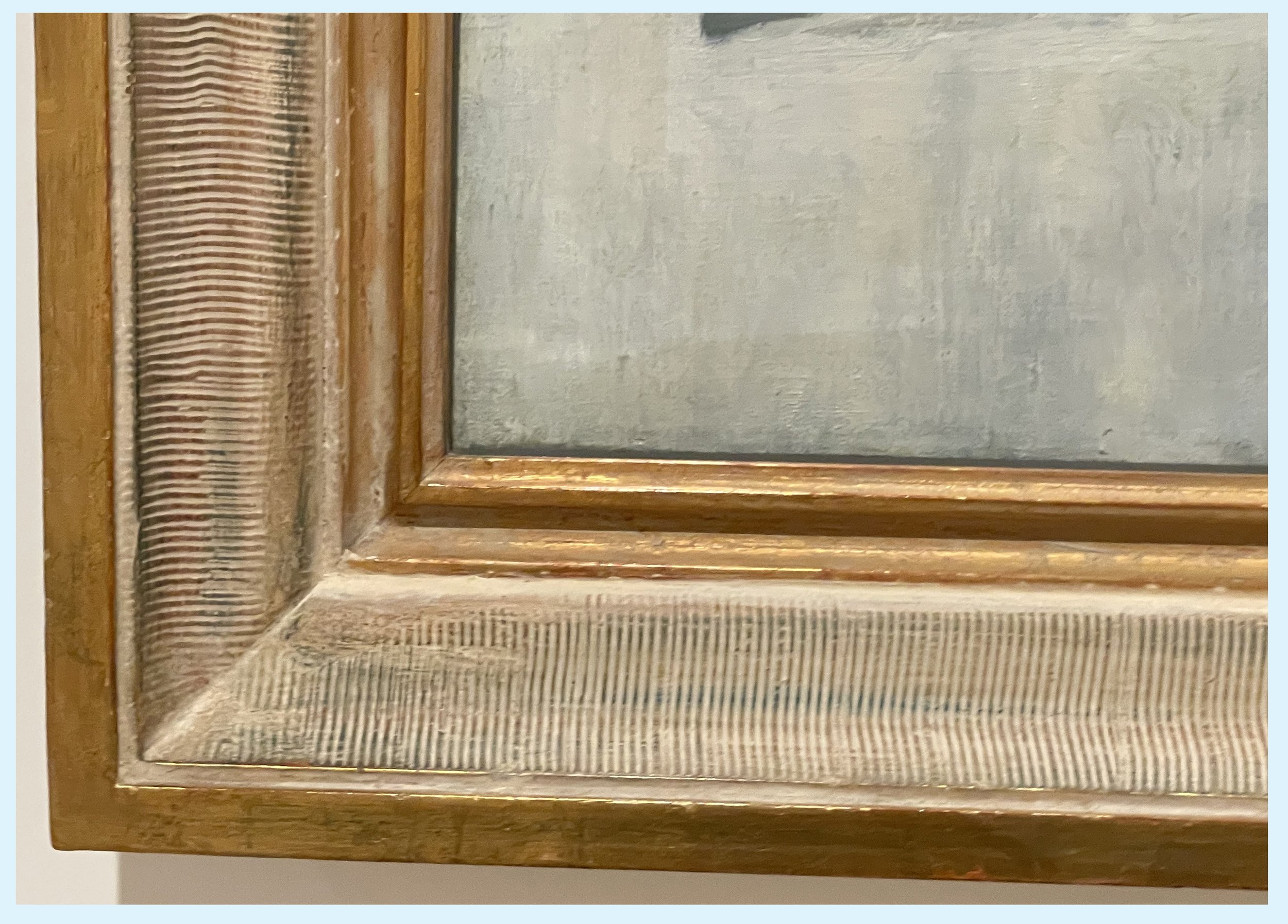
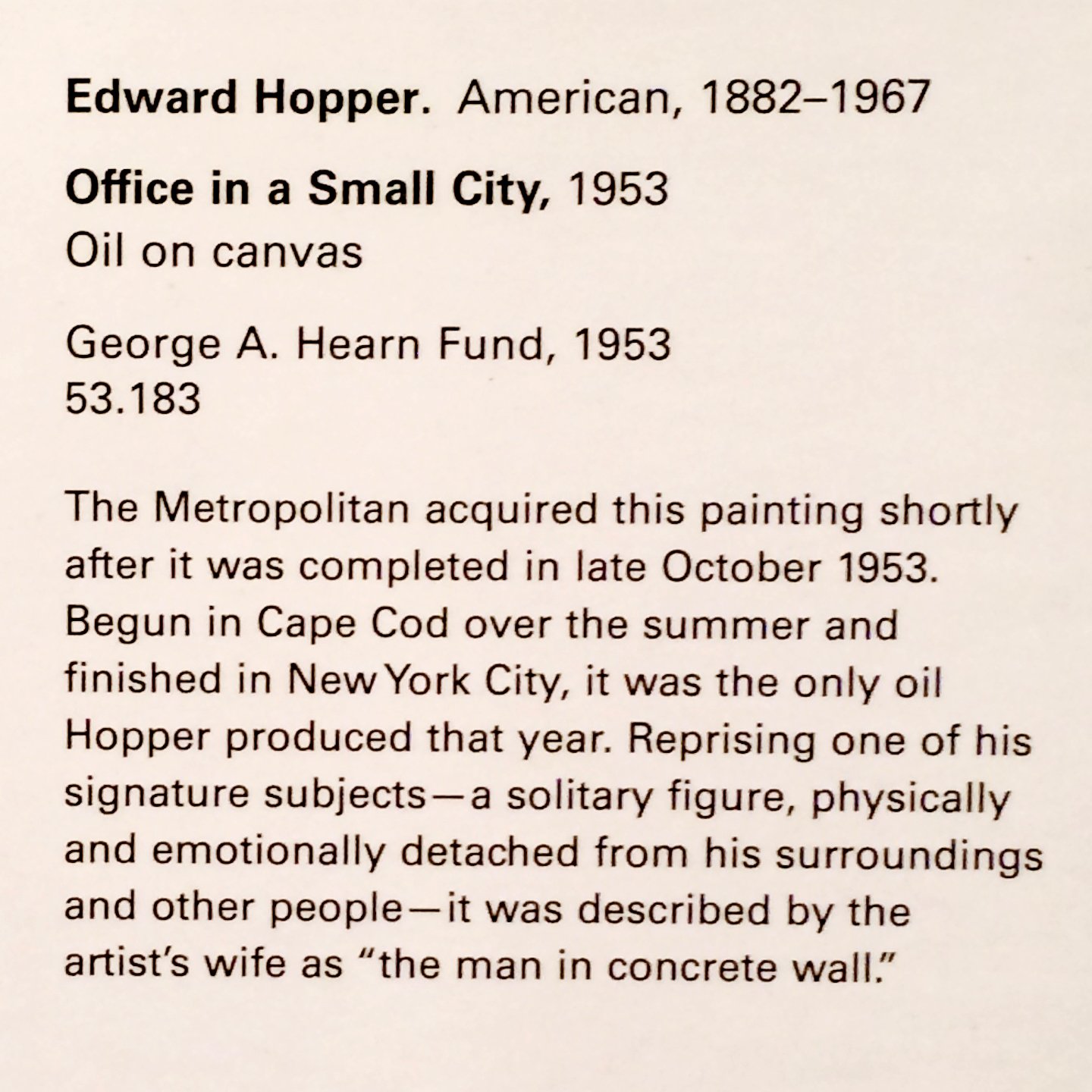
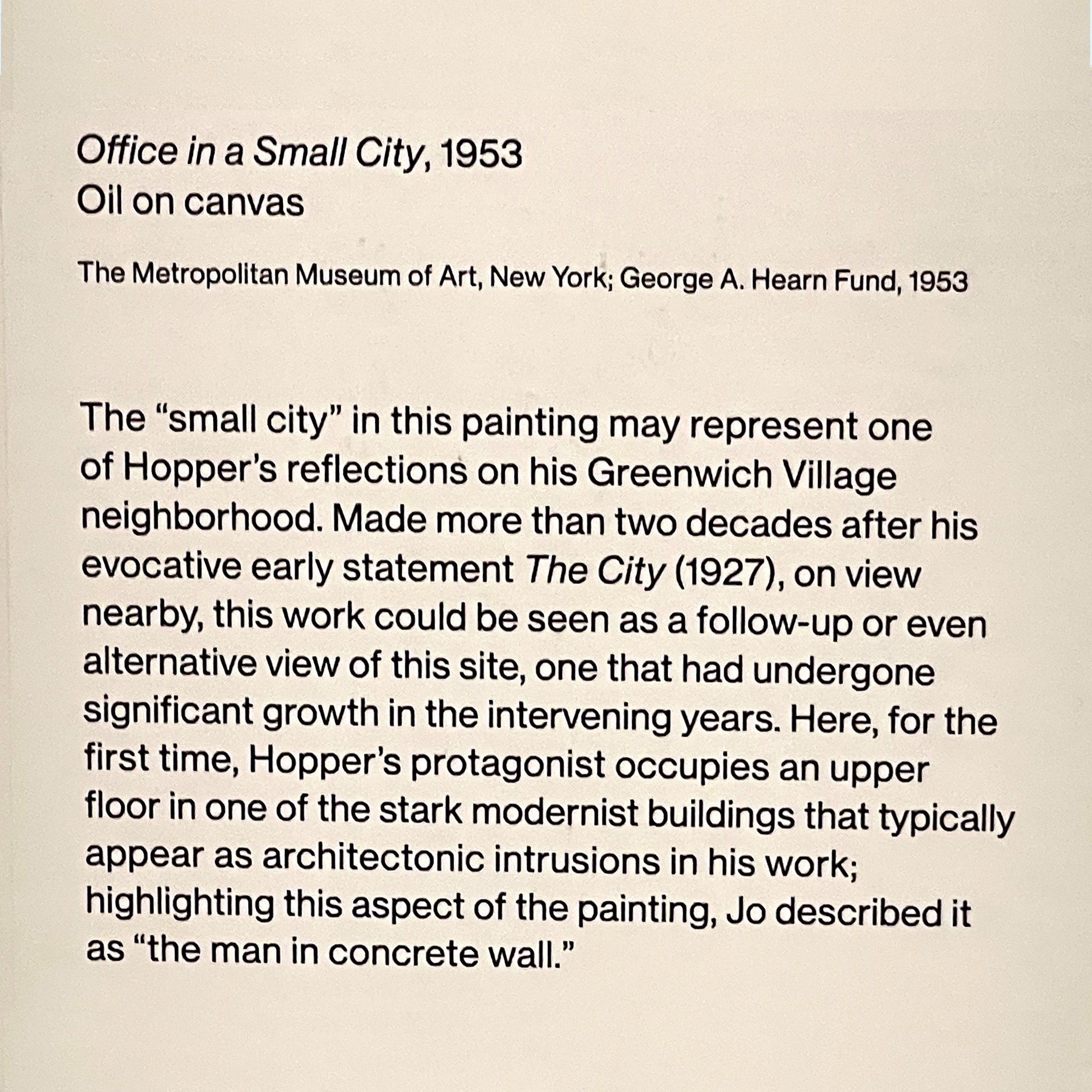
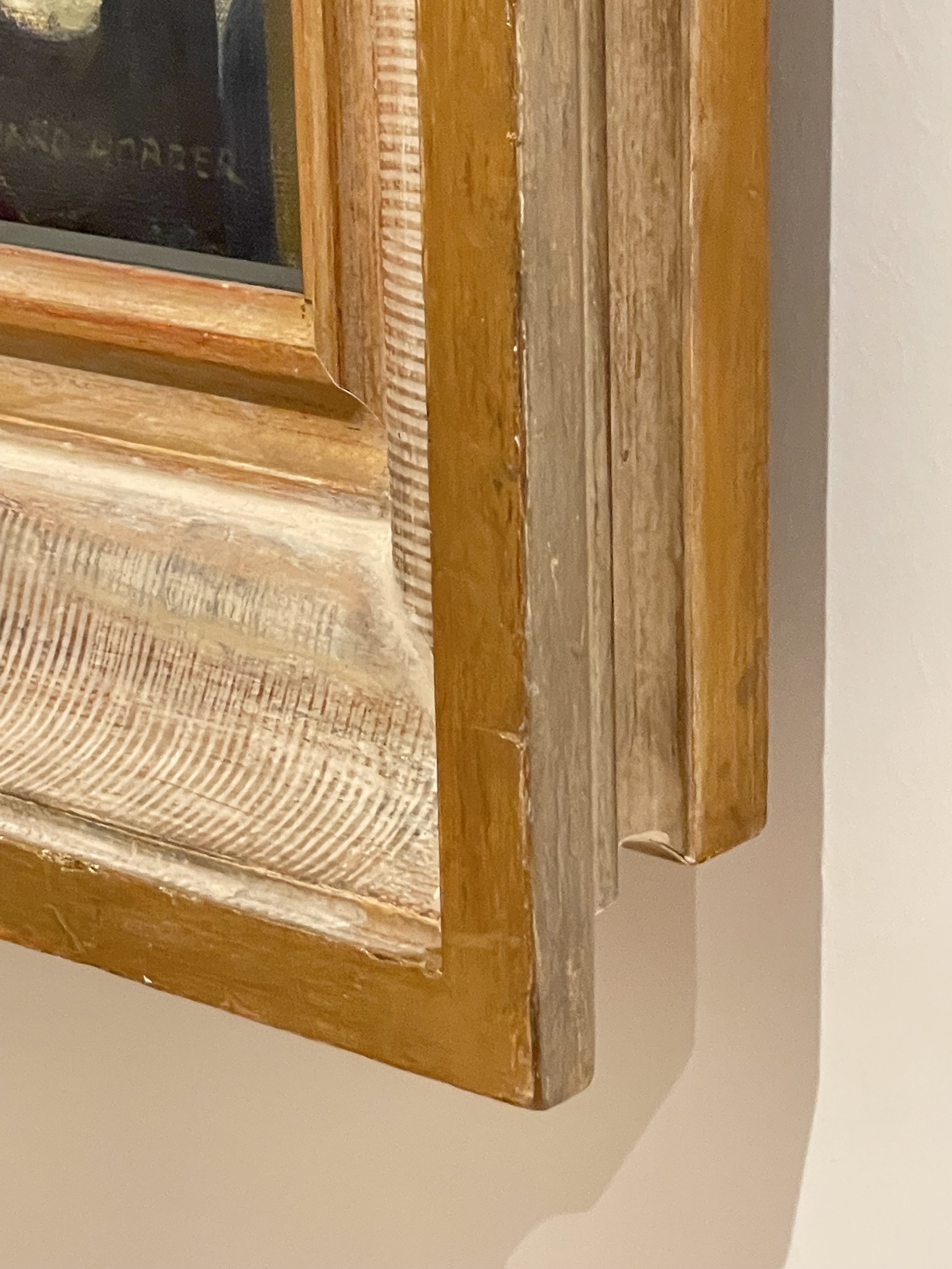
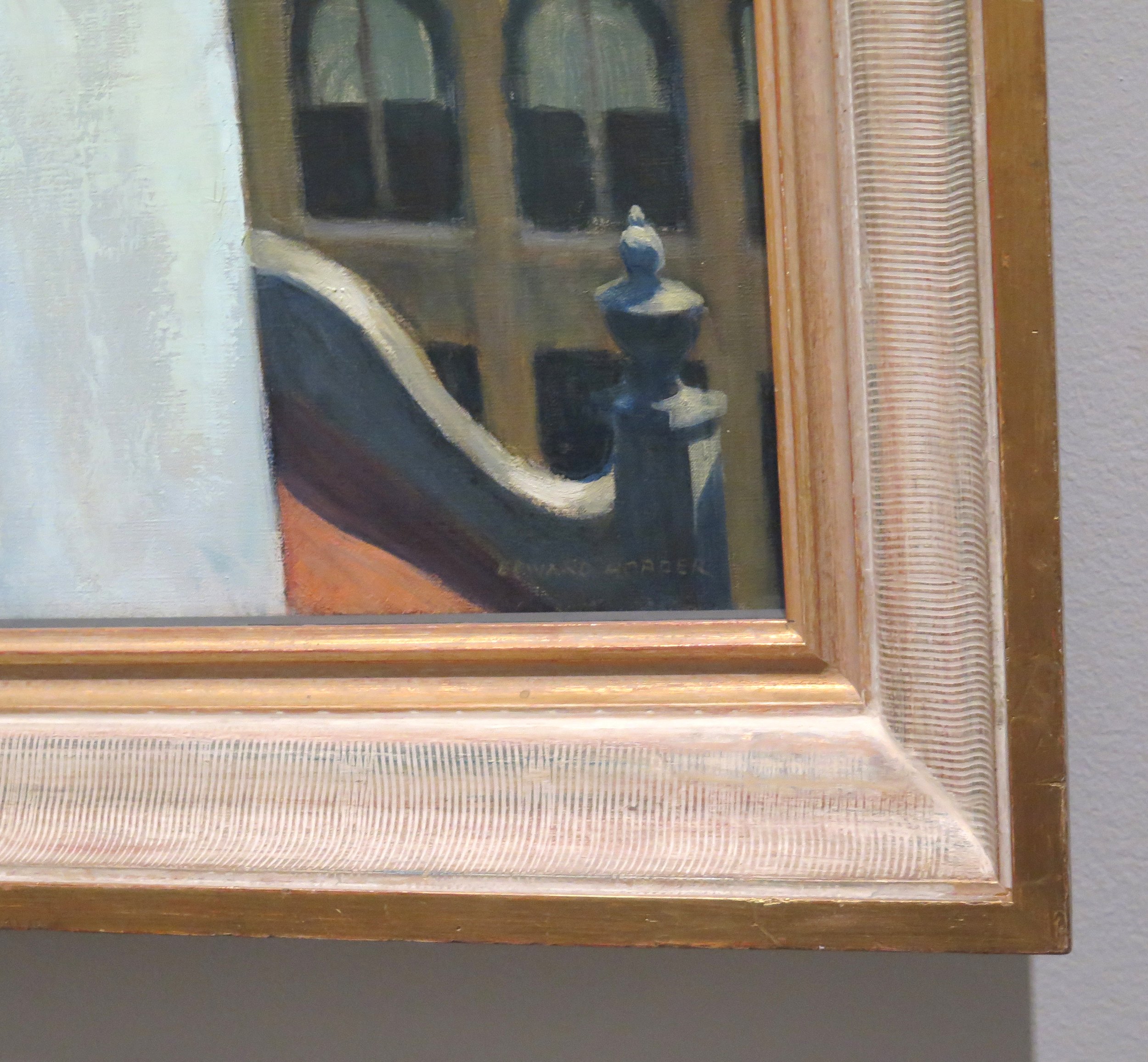


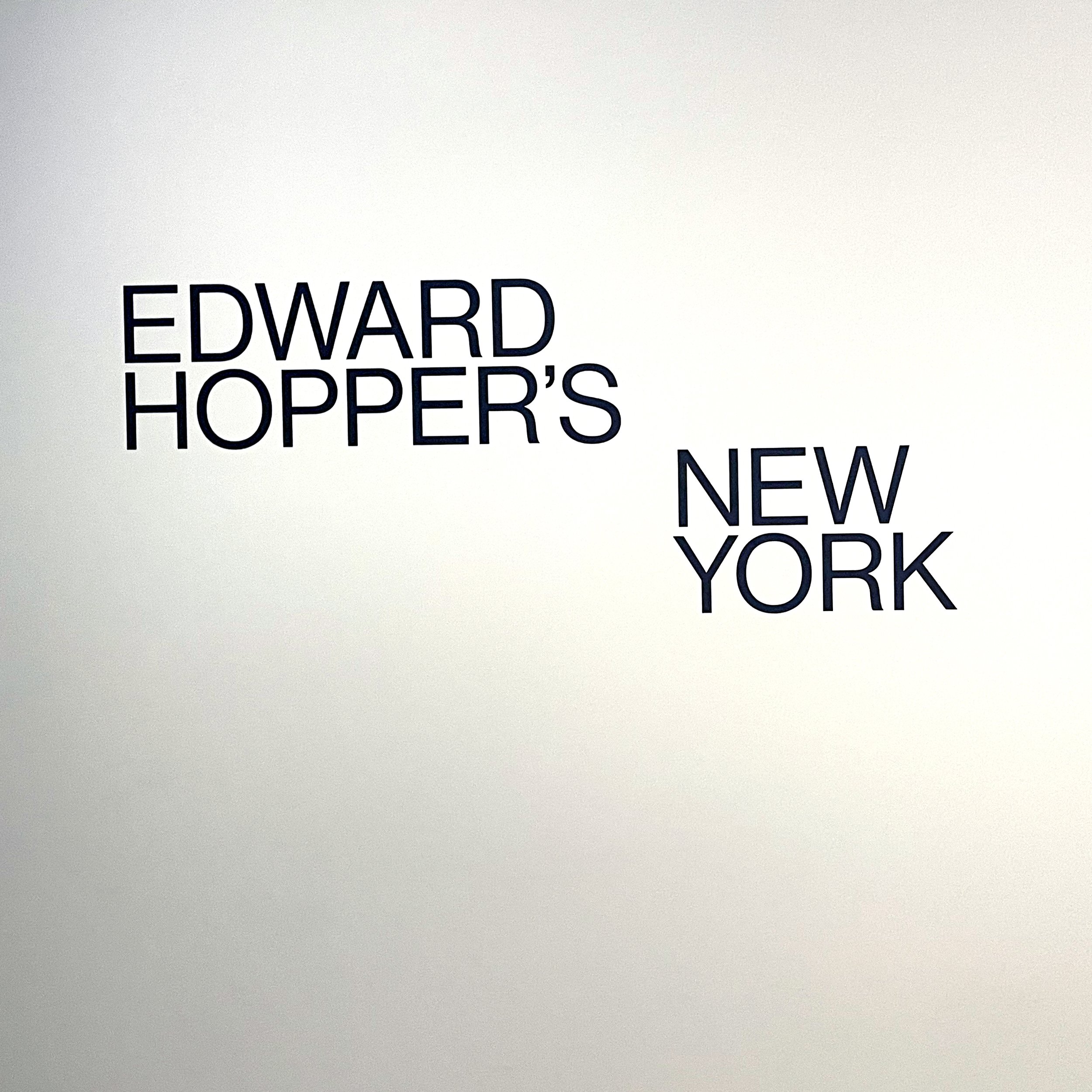
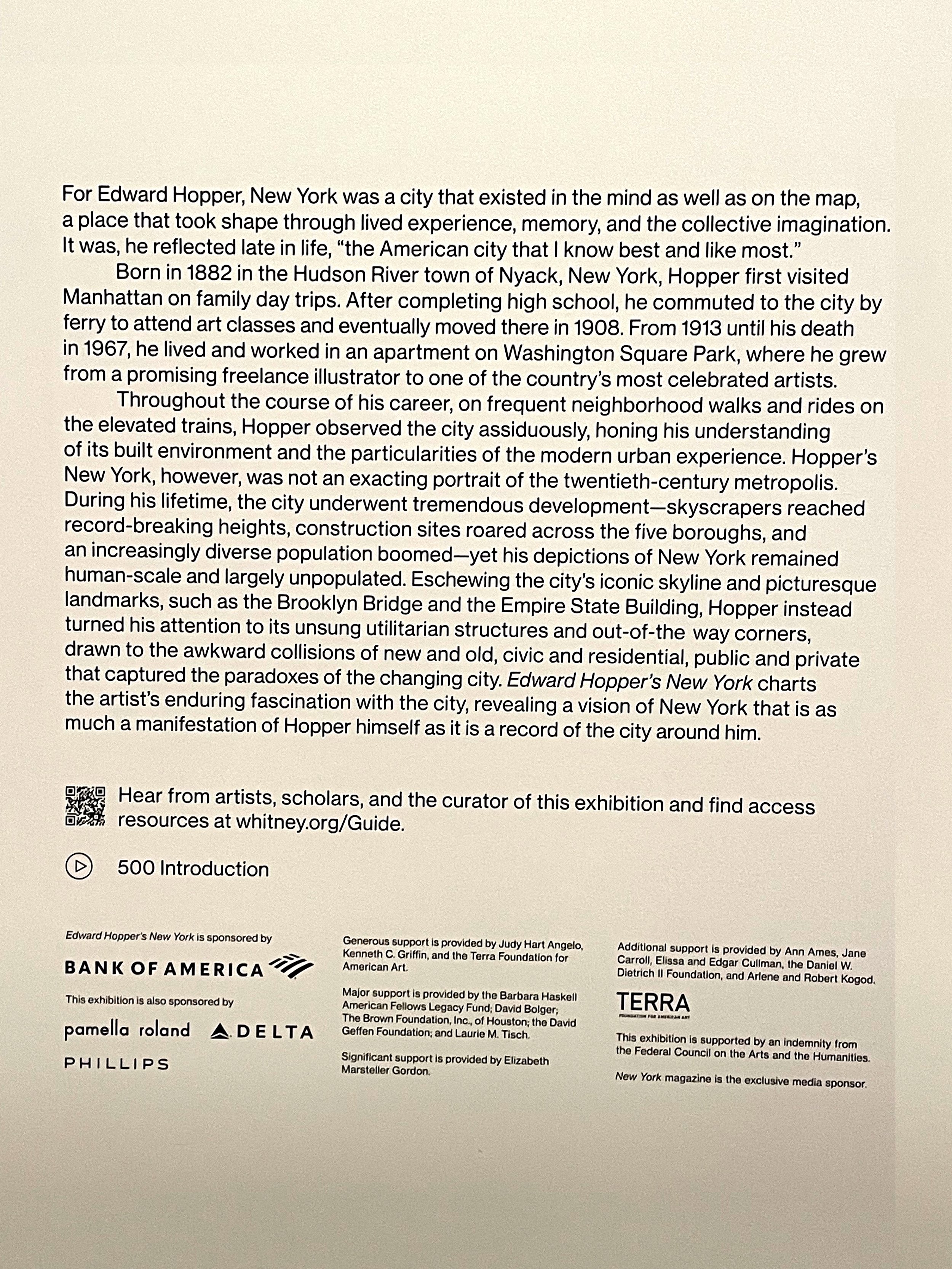
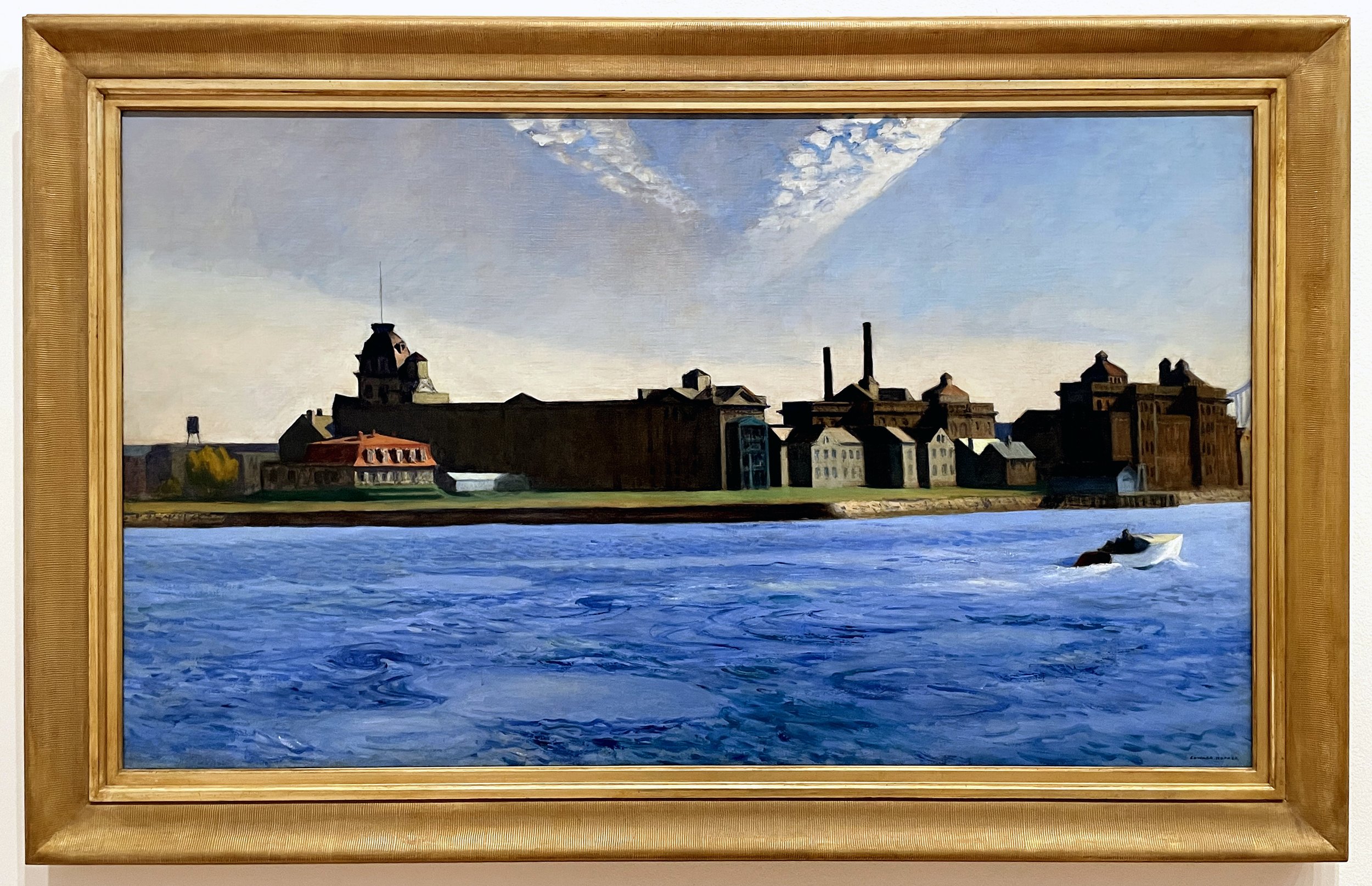
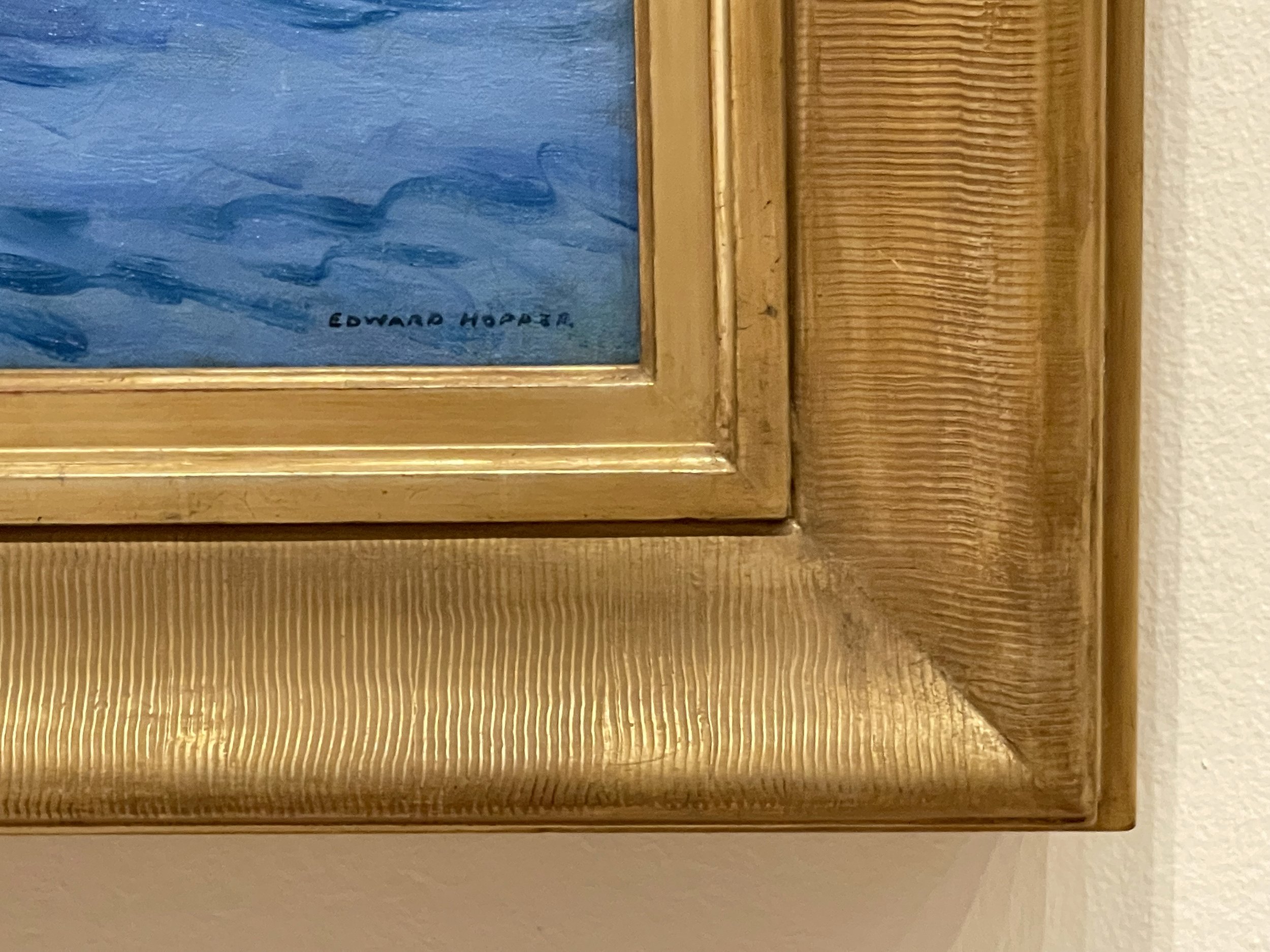
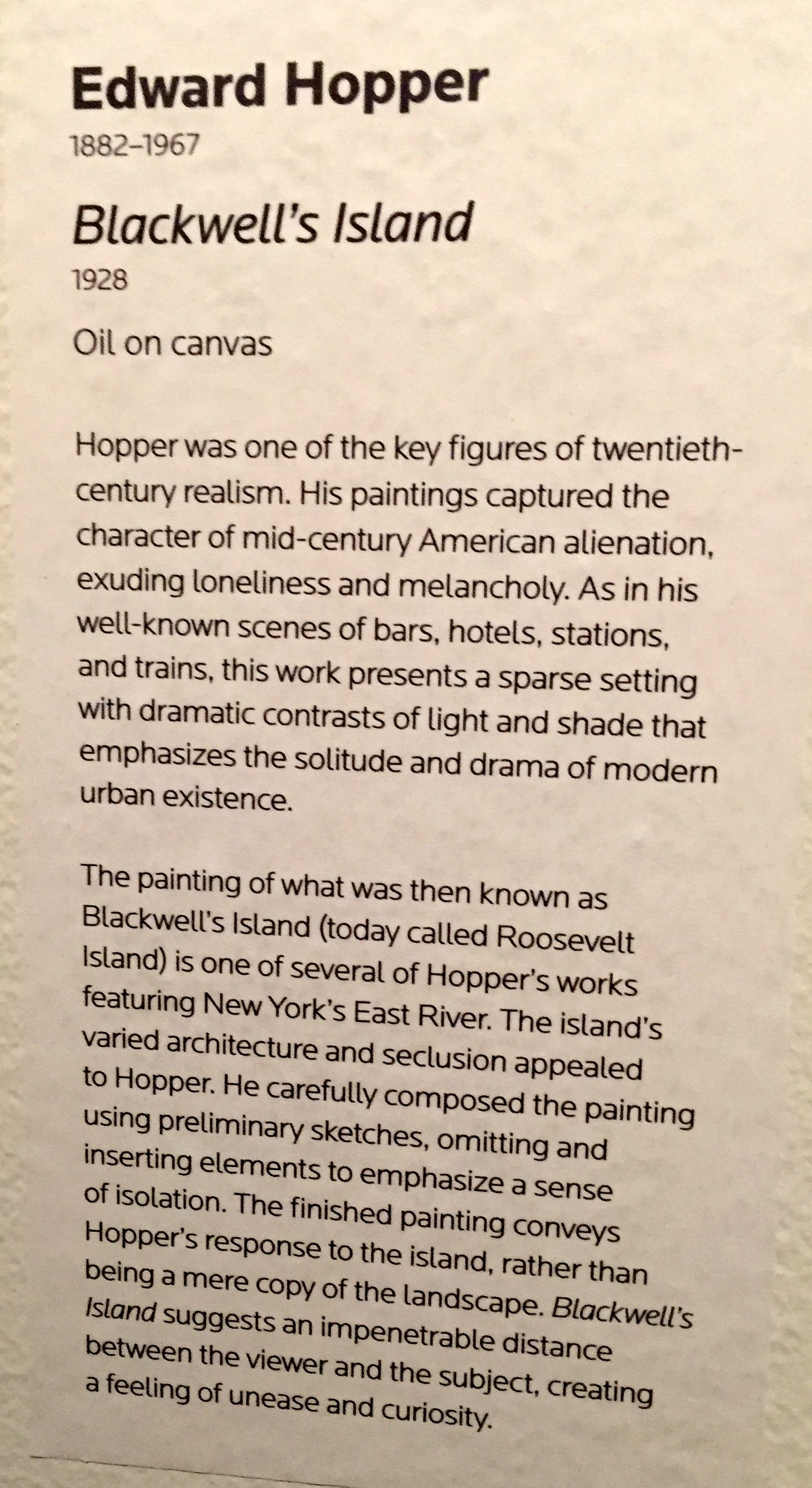
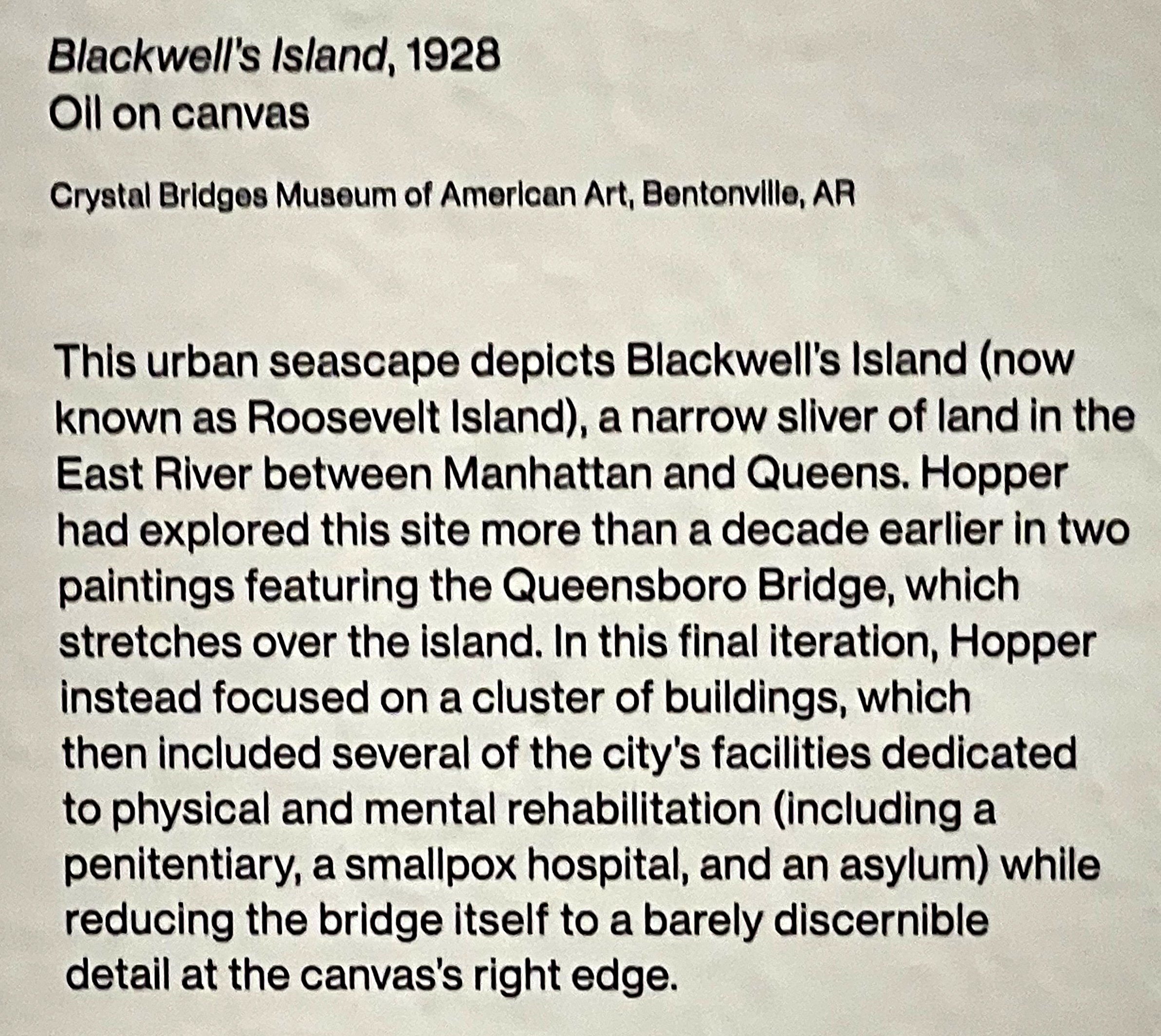
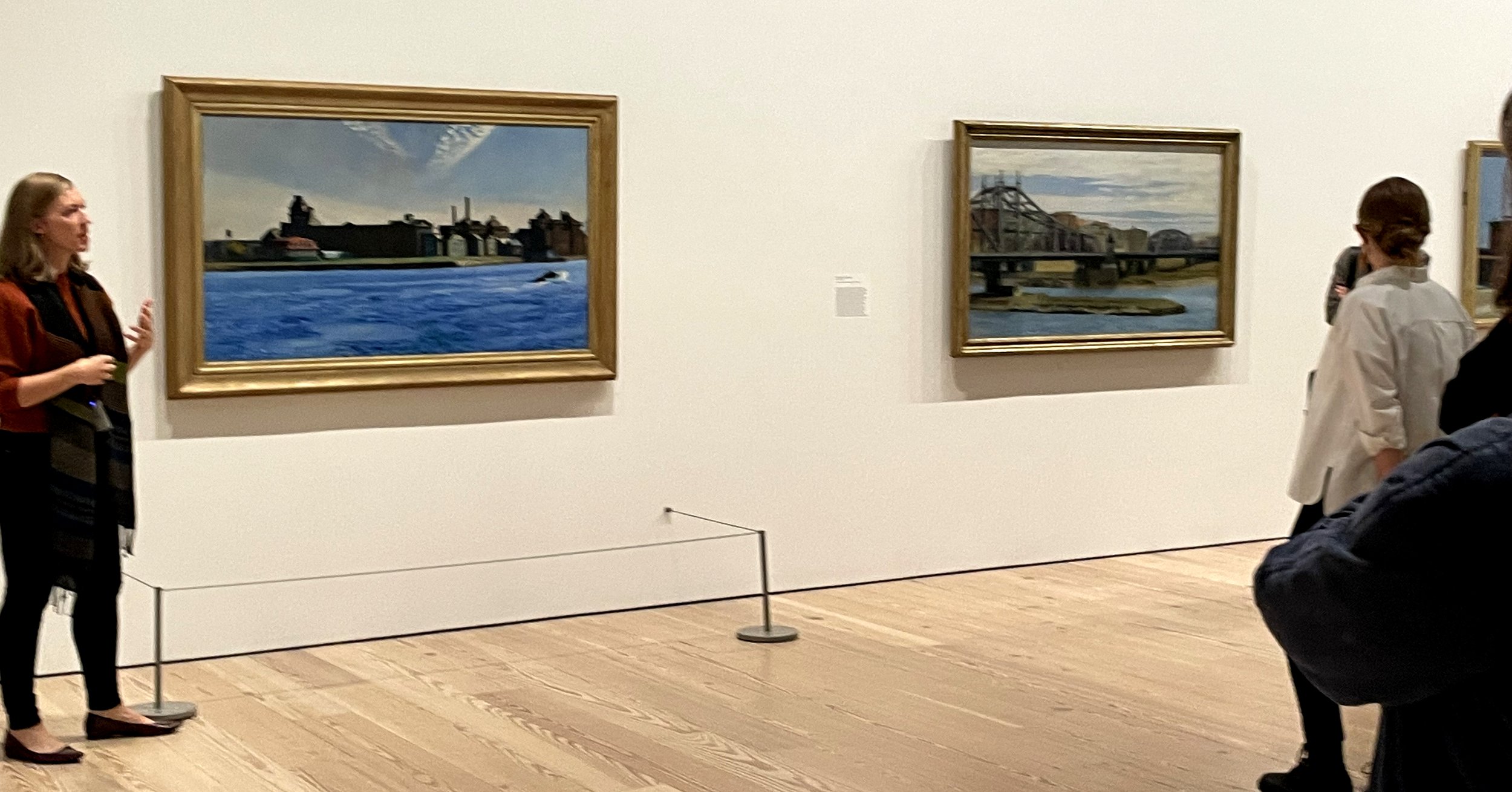
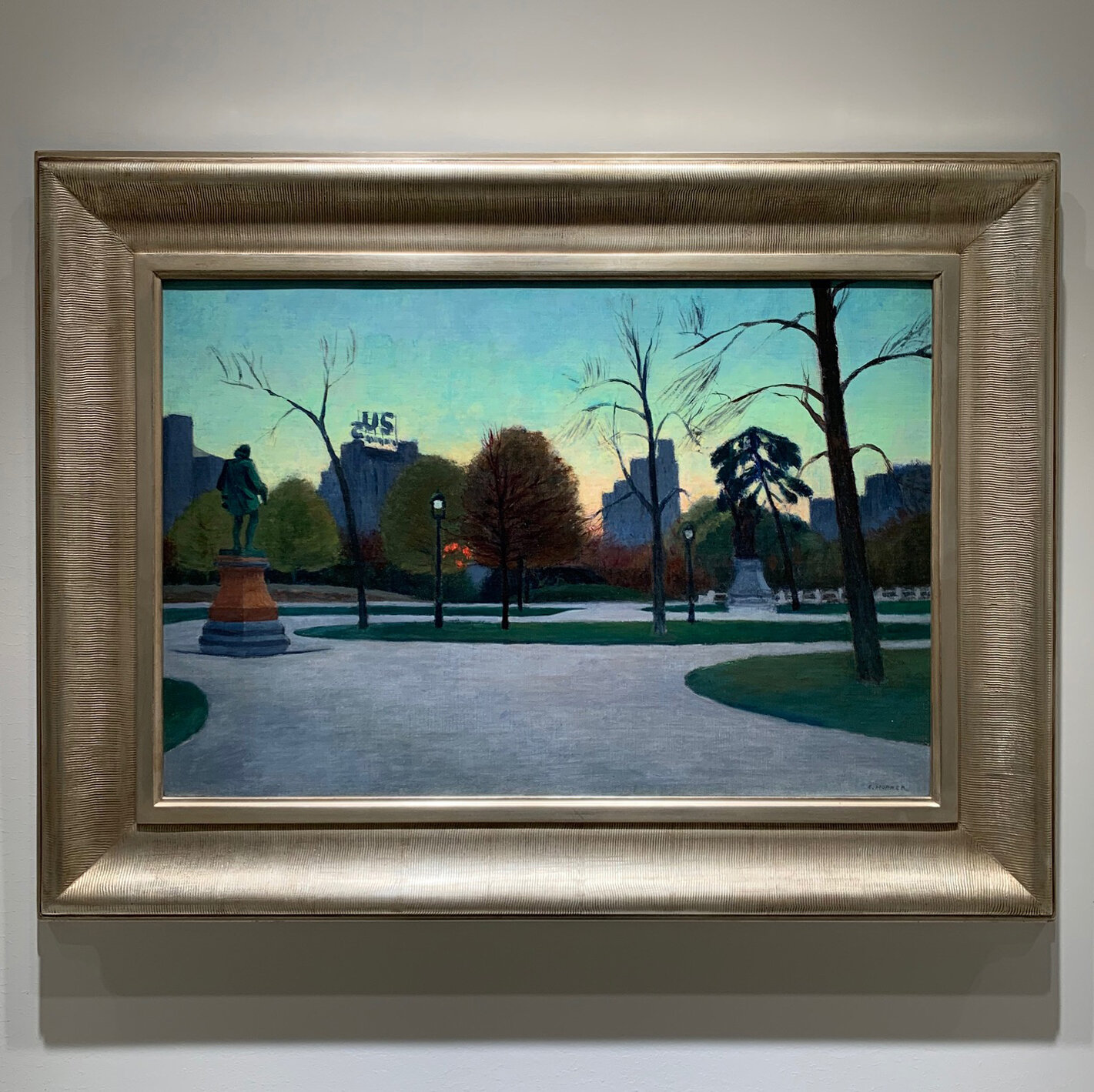
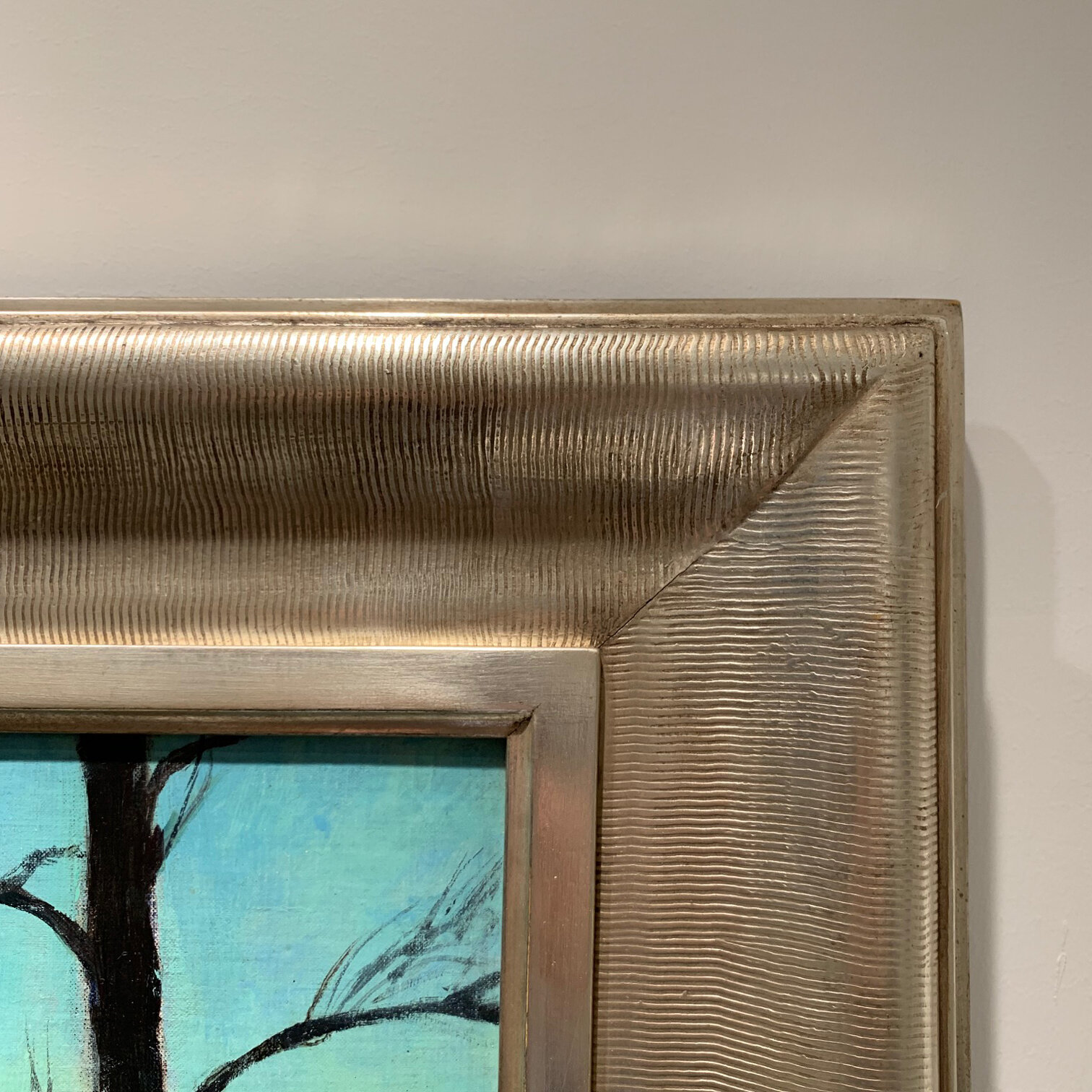
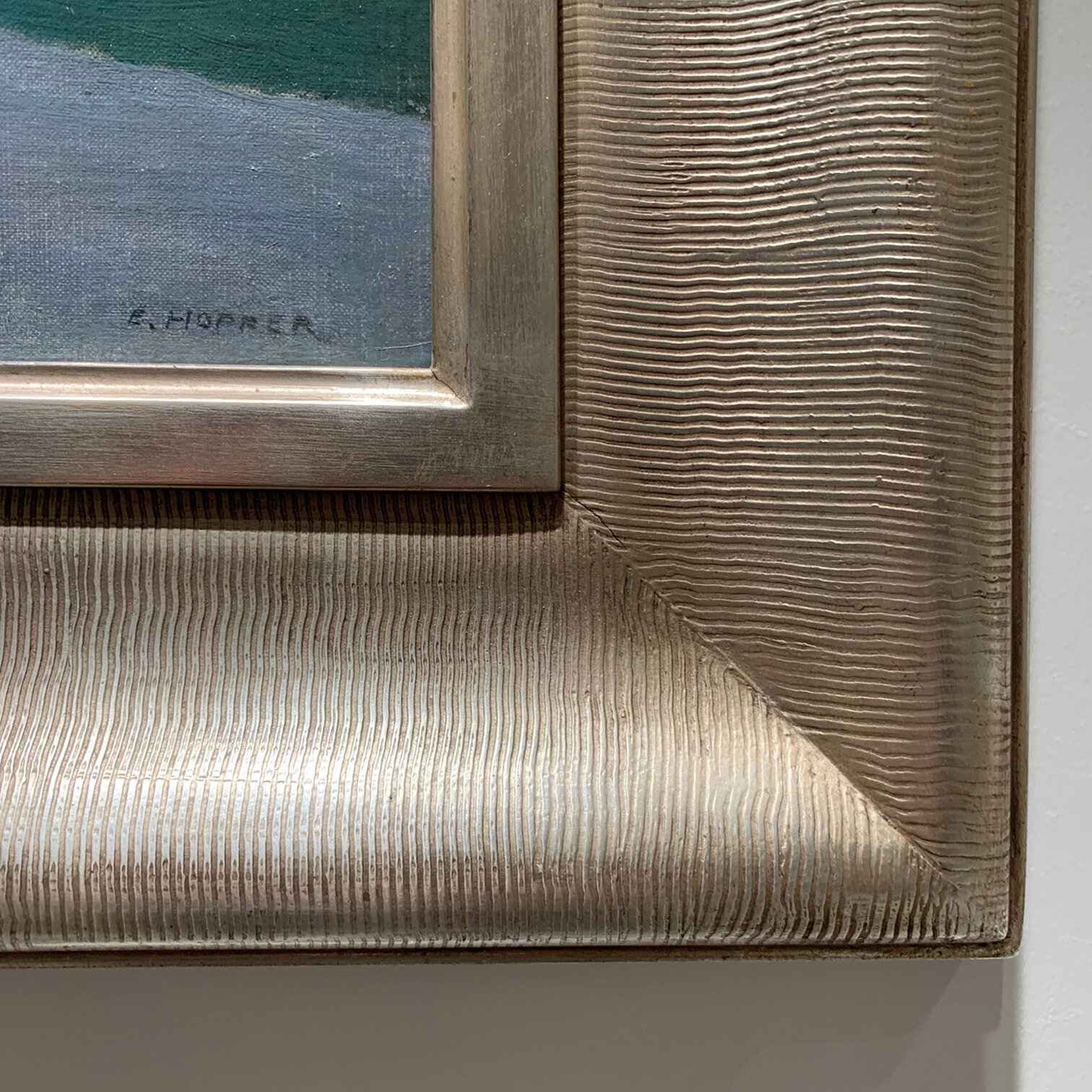
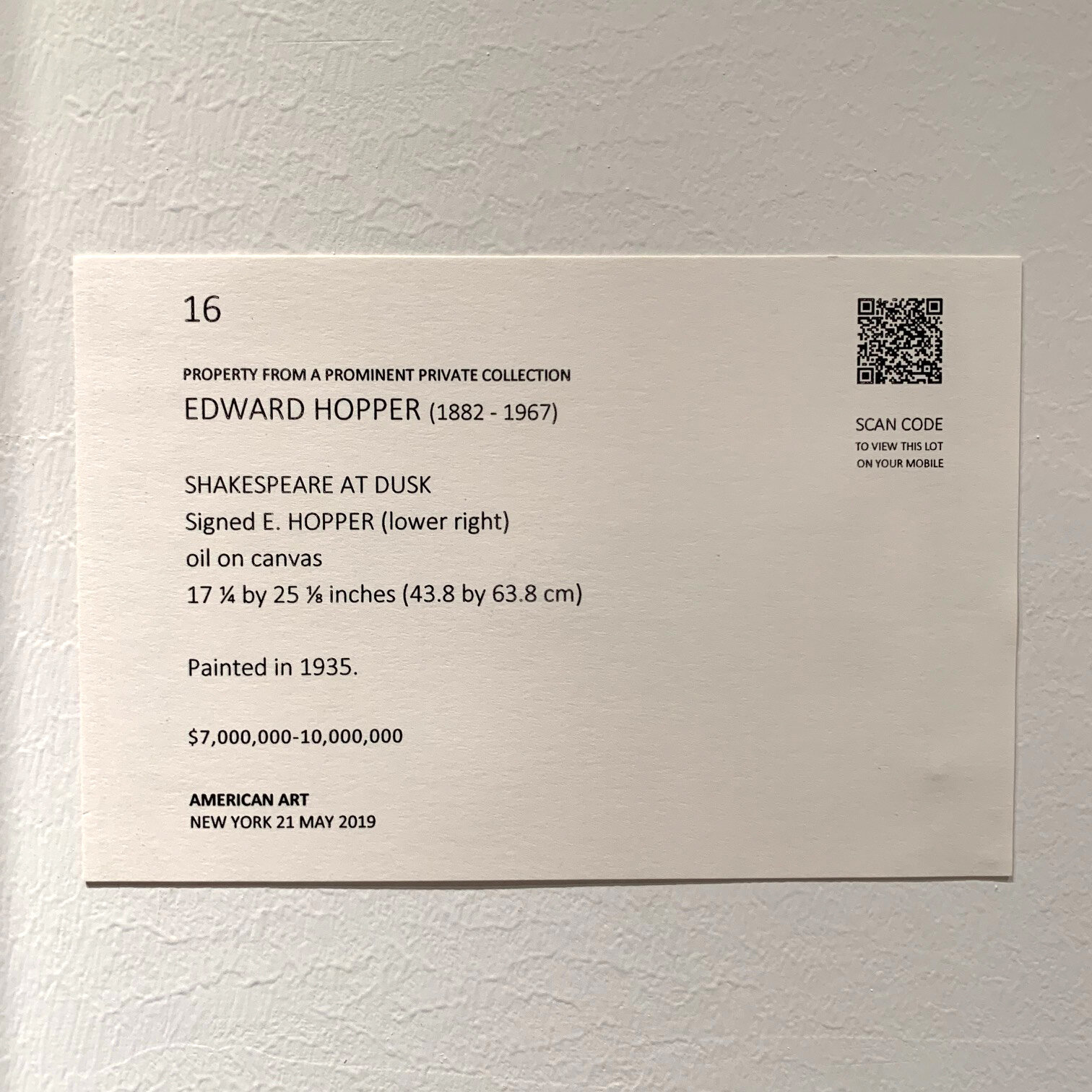
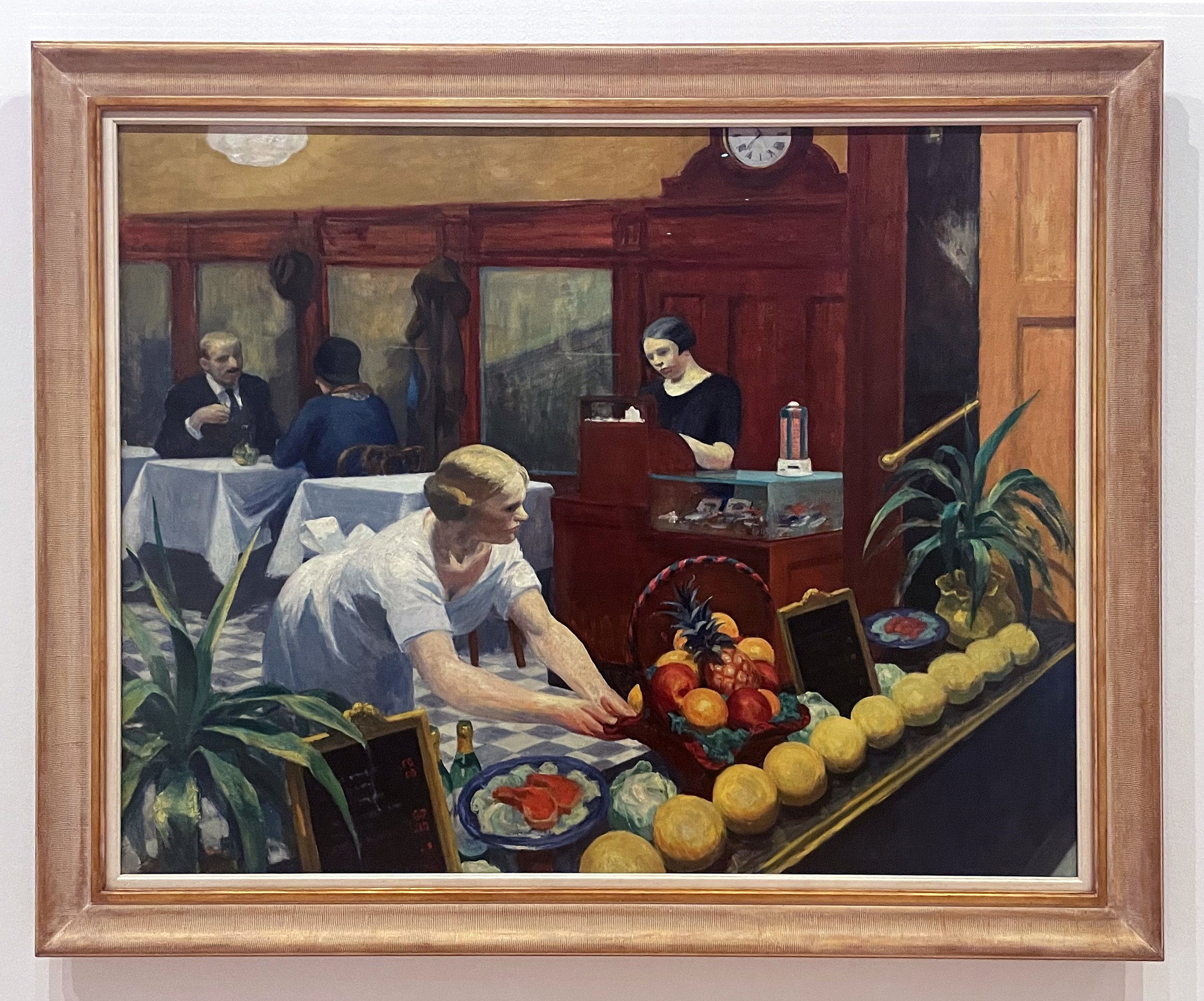
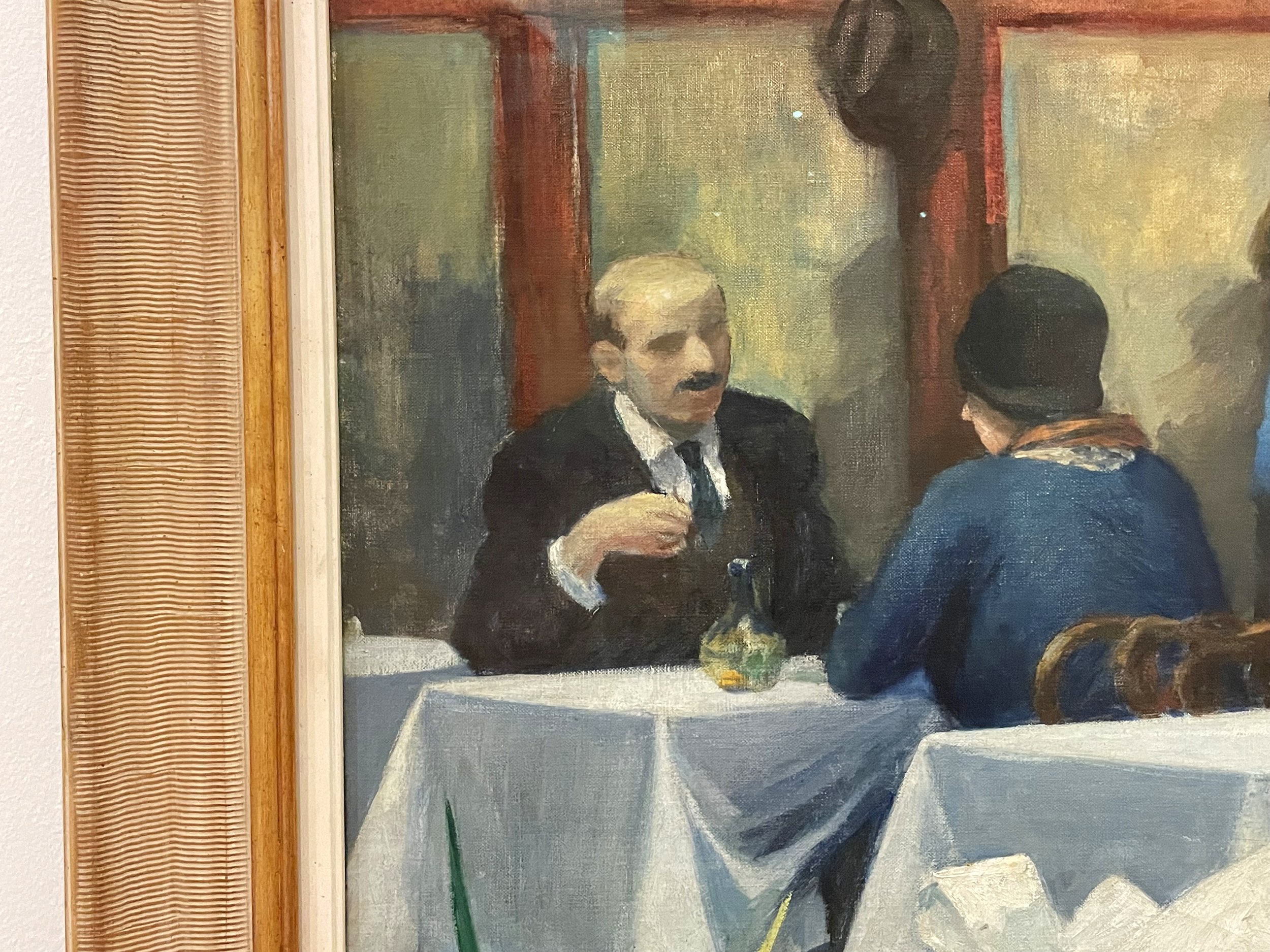
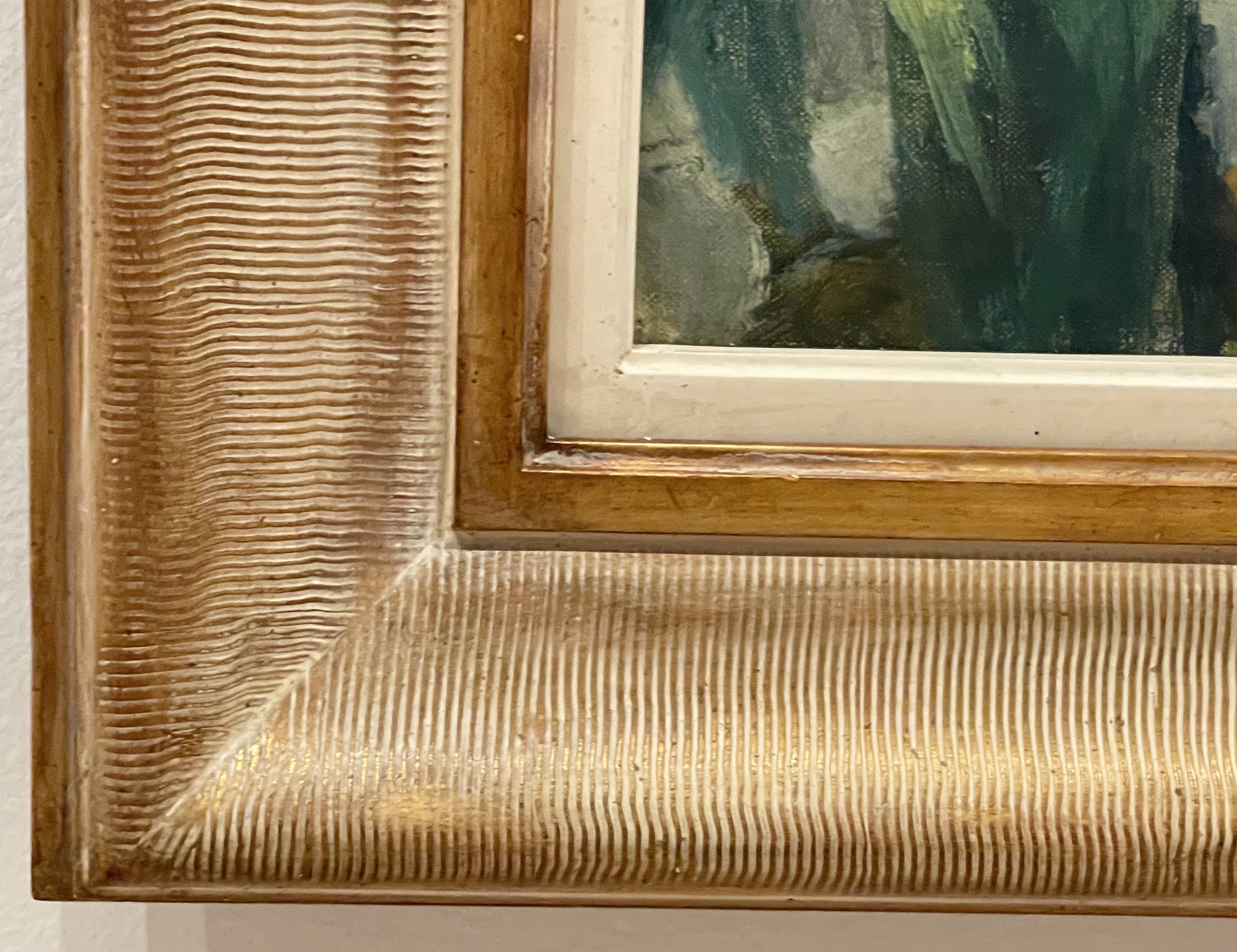
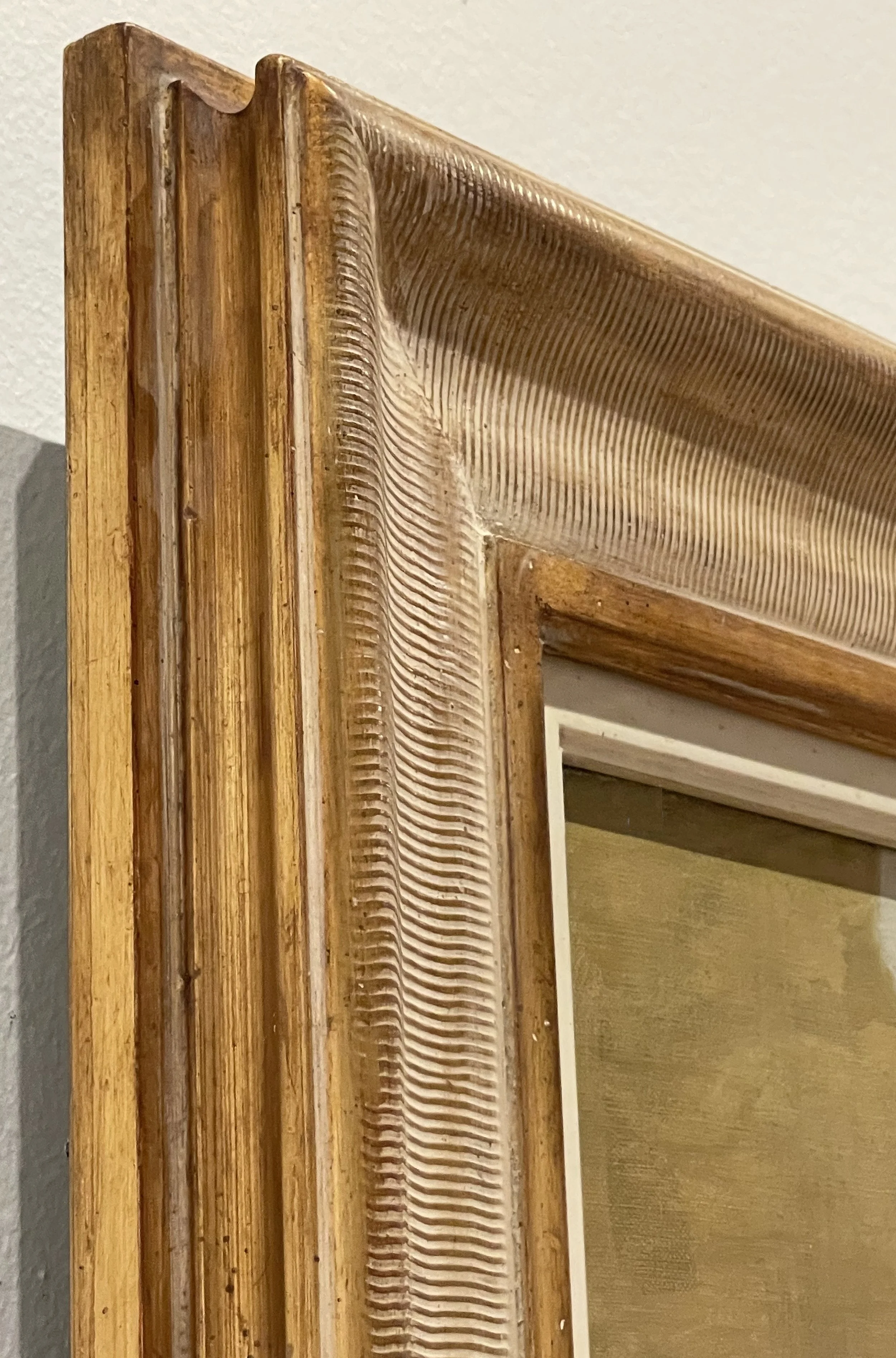
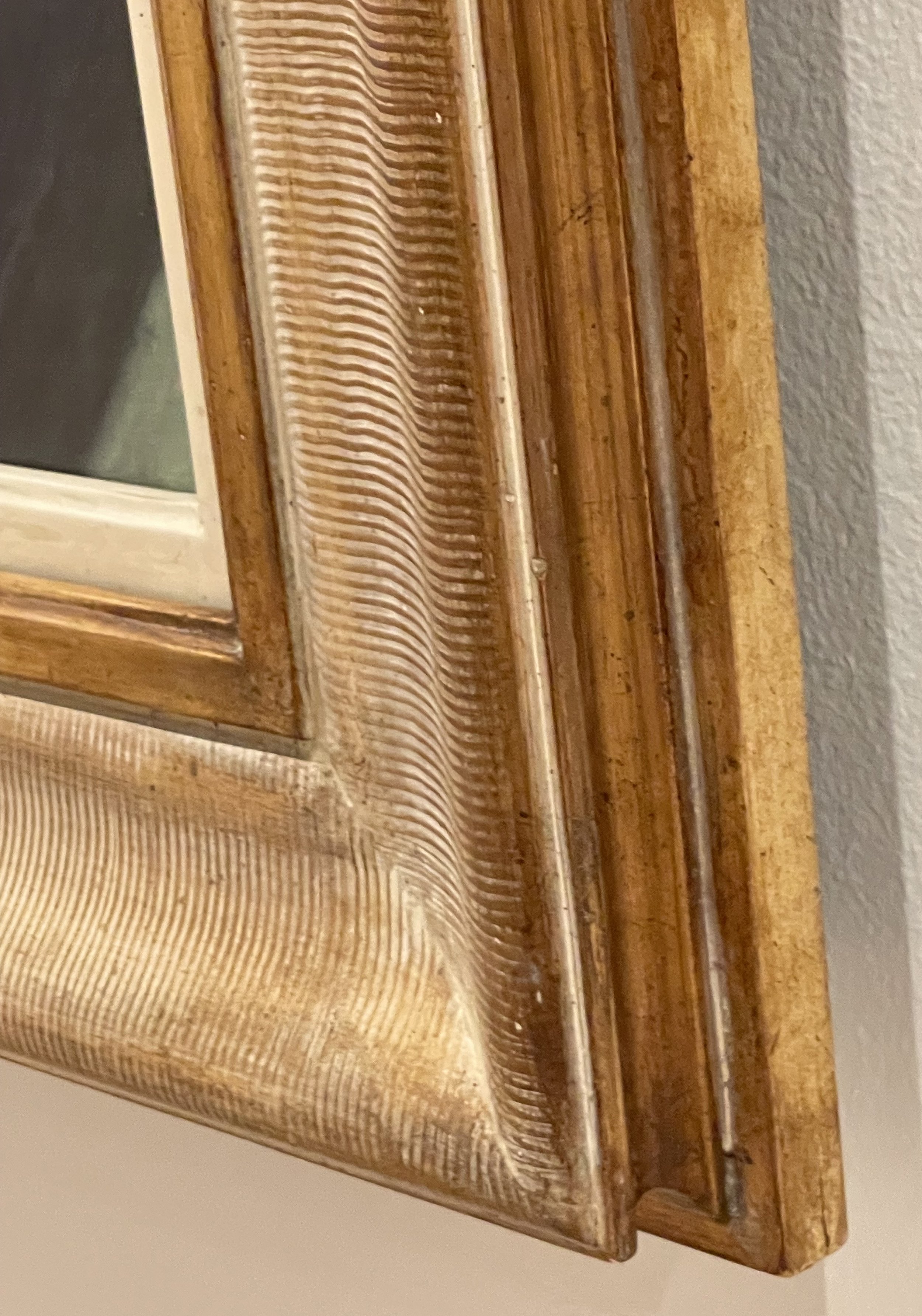
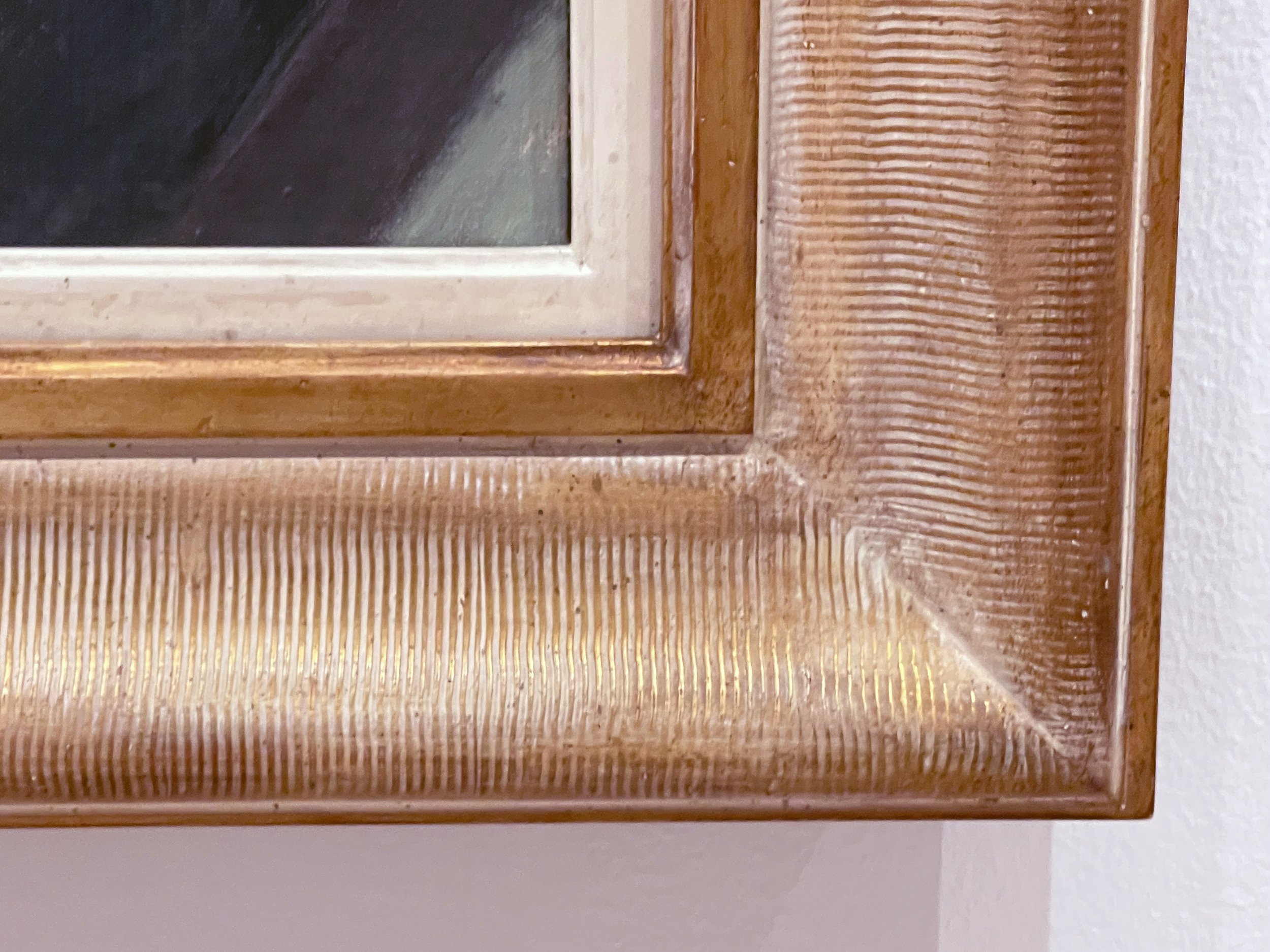
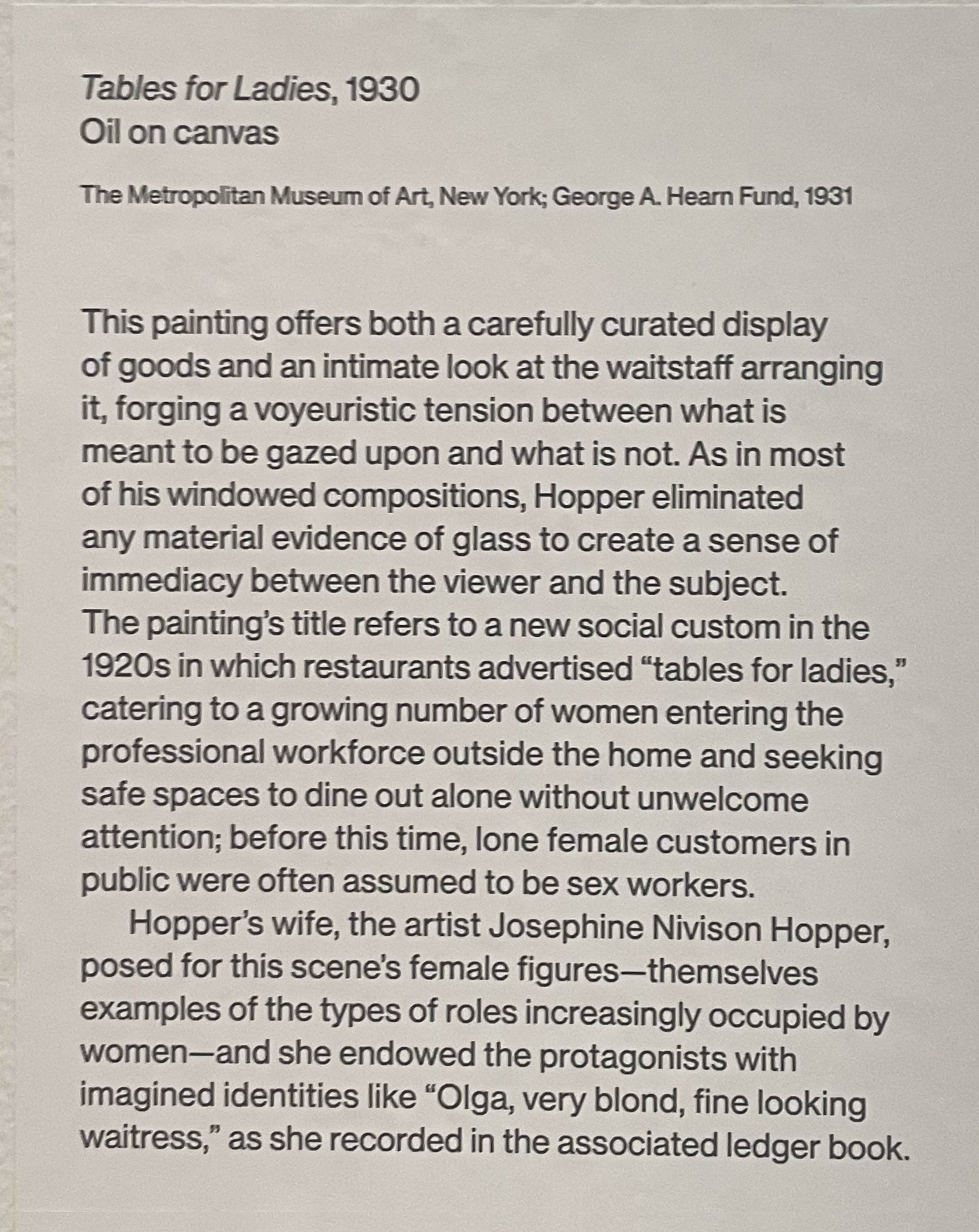




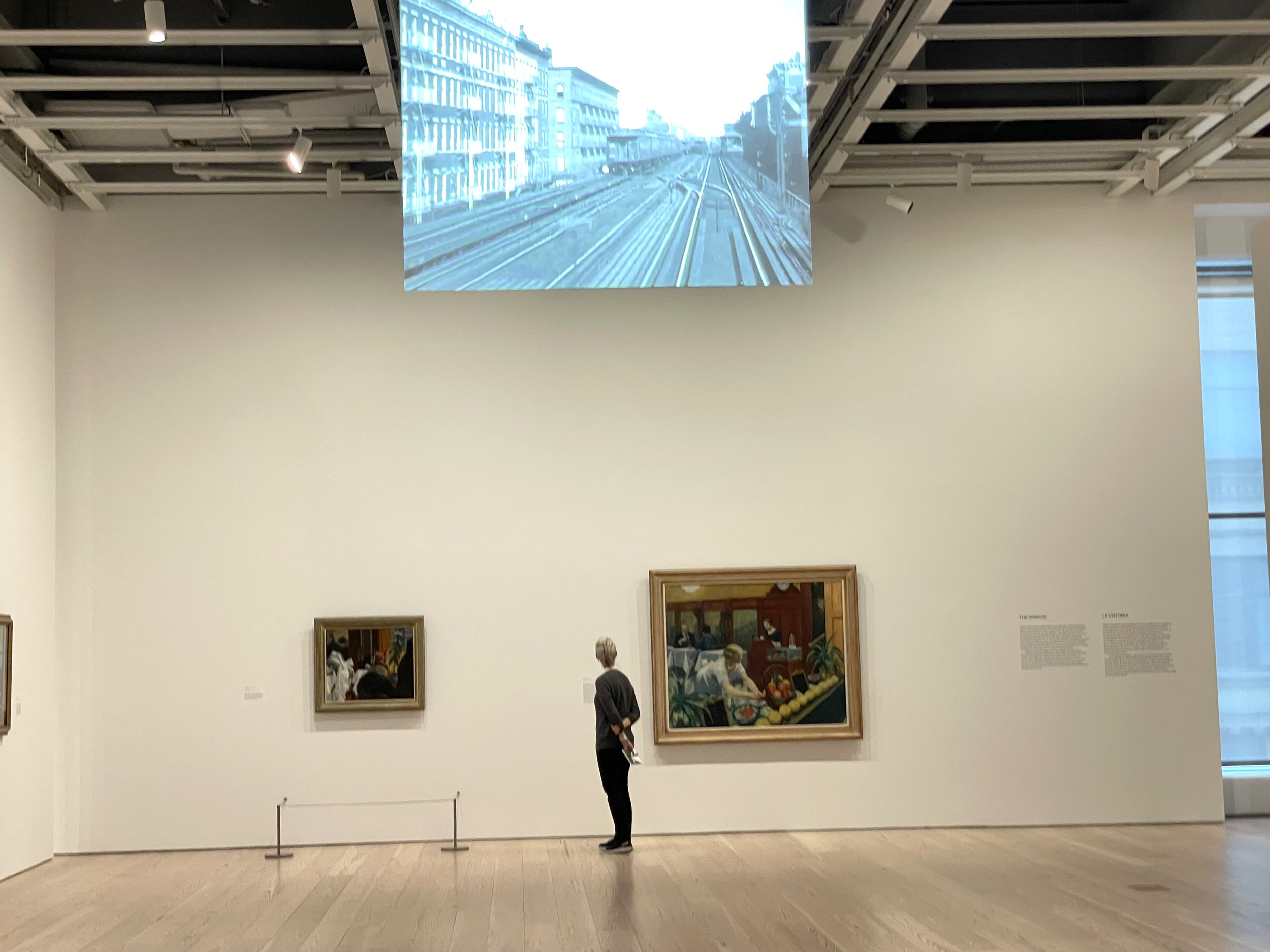
Your Custom Text Here
EDWARD HOPPER (1882–1967)
Nighthawks, 1942, oil on canvas, 33-1/8 x 60 inches, custom-designed, gilded, and patinated frame, 9-karat gray-gold leaf over fine-combed gesso and cast ornament on carved wood; custom-fabricated in the Gill & Lagodich New York studios; combed pattern, ogee profile, and gilded patina based on original Hopper frame models. "Edward Hopper said that Nighthawks was inspired by “a restaurant on New York’s Greenwich Avenue where two streets meet,” but the image—with its carefully constructed composition and lack of narrative—has a timeless, universal quality that transcends its particular locale. One of the best-known images of twentieth-century art, the painting depicts an all-night diner in which three customers, all lost in their own thoughts, have congregated. Hopper’s understanding of the expressive possibilities of light playing on simplified shapes gives the painting its beauty. Fluorescent lights had just come into use in the early 1940s, and the all-night diner emits an eerie glow, like a beacon on the dark street corner. Hopper eliminated any reference to an entrance, and the viewer, drawn to the light, is shut out from the scene by a seamless wedge of glass. The four anonymous and uncommunicative night owls seem as separate and remote from the viewer as they are from one another. (The red-haired woman was actually modeled by the artist’s wife, Jo.) Hopper denied that he purposefully infused this or any other of his paintings with symbols of human isolation and urban emptiness, but he acknowledged that in Nighthawks “unconsciously, probably, I was painting the loneliness of a large city.” — Art Institute of Chicago, Essential Guide, 2013, p. 58
Nighthawks on view at l'exposition "Edward Hopper", Grand Palais, Paris, October 2012 – January 2013.
EDWARD HOPPER (1882–1967)
Chop Suey, 1929, oil on canvas, 32” x 38”. Lot offered at Christie’s, New York, 13 November, 2018, est. $70,000,000–100,000,000. “Chop Suey is one of the best pieces of American Modernism to have come to auction in generations … The $91,875,000 paid for the work set a world auction record, not only for Edward Hopper but for any piece of pre-war American art.” Gill & Lagodich originally designed and fabricated this elegant frame model for Hopper’s iconic nocturne Nighthawks (Art Institute of Chicago); patinated white gold, hand-combed gesso on ogee profile, molding width 5 inches, design based on molds and profile of original Nighthawks frame as chosen by Hopper’s dealer Frank Rehn.
EDWARD HOPPER (1882–1937)
Office in a Small City, 1953, oil on canvas, 28 x 40 in. Framed by Gill & Lagodich for the Metropolitan Museum of Art (2021). Period American Modernist “Hopper” frame; polychrome washed patina over metal-leaf gilding on combed gesso substrate; molding width 3-7/8 in.; frame design original to a number of Hopper paintings. This frame provenance Hirshhorn Museum. Handwritten verso: REHN and various numbers. This frame bears Hirshhorn accession number 66.2507, for Edward Hopper, Hotel By A Railroad, 1952, provenance Frank Rehn Gallery, Joseph H. Hirshhorn. Gold paper label verso: MADE BY / D. MATT / HAND CARVED PICTURE FRAMES / 157 EAST 54TH STREET / NEW YORK CITY / PLAZA 8-23__ “The Metropolitan acquired this painting shortly after it was completed in late October 1953. Begun in Cape Cod over the summer and finished in New York City, it was the only oil painting Hopper produced that year. Josephine (Nivinson) Hopper, the artist’s wife and an artist in her own right, described this painting, which reprises one of his signature subjects—a solitary figure, physically and emotionally detached from his surroundings and other people—as ‘the man in concrete wall.’” —Met Museum label. Painting credit: George A. Hearn Fund, 1953.
EDWARD HOPPER (1882–1937)
Blackwell’s Island, 1928, oil on canvas, 34-1/2” x 59-1/2” framed by Gill & Lagodich. Replica of custom frame originally designed and fabricated by Gill & Lagodich for Hopper’s ‘Nighthawks,’ (Art Institute of Chicago), variation is gold patination on white gold, combed gesso and bole on wood, wide ogee profile, molding width 5 in. “In Blackwell’s Island, Edward Hopper explored the intersection of nature and the urban environment at the location on New York’s East River. The painting features a wide expanse of sky above and turbulent cobalt blue water below, bisected by a shadowy skyline of buildings. In the past, Blackwell’s Island (today called Roosevelt Island) had been the site of a prison, mental asylum, and hospital, among other facilities. The island's varied architecture and seclusion appealed to Hopper.” —CBMAA label text. “The Horizontal City: Five paintings made between 1928 and 1935—Manhattan Bridge Loop; Blackwell’s Island; Macomb’s Dam Bridge; Apartment Houses, East River; and Early Sunday Morning—share nearly identical dimensions and the same panoramic format. Collectively, these paintings provide invaluable insight into Hopper’s contrarian vision of a horizontal city; as Alfred H. Barr observed of Hopper’s work in 1933: ‘His indifference to skyscrapers is remarkable in a painter of New York architecture.’ Describing his aims in Manhattan Bridge Loop, Hopper explained that the painting’s horizontal composition was an attempt to give “a sensation of great lateral extent” and bring attention to the cityscape beyond the frame; “I just never cared for the vertical,” he later quipped. His depictions of the wide spans of the city’s bridges, its industrial landscapes, and its low-slung buildings elevate the quotidian and prosaic over the iconic, offering a powerful counterpoint to the awe-inspiring views of the New York skyline celebrated in the news and in works by many of his contemporaries.” —Whitney Museum exhibition text.
EDWARD HOPPER (1882–1967)
Shakespeare at Dusk, 1935, oil on canvas, 17-1/4 x 25-1/8 inches. Lot offered at Sotheby’s, New York, May 21, 2019, est. $7,000,000–10,000,000. Gill & Lagodich originally designed and fabricated this elegant frame model for Hopper’s iconic nocturne Nighthawks (Art Institute of Chicago); patinated white gold, hand-combed gesso on ogee profile, molding width 4-1/4 inches. Sotheby’s catalogue entry “Shakespeare at Dusk captures the visual poetry of twilight in a large city, when the cacophonous noise of streetcars and elevated trains begins to acquiesce to the stillness of night. This Central Park scene belongs to Hopper’s celebrated series of New York cityscapes—subject matter he explored early in his career while studying under Robert Henri and continued until his death in 1967. A lifelong lover of poetry and prose, Shakespeare at Dusk is among the only major works in Hopper’s oeuvre that overtly references the profound influence of literature on his emotional response to specific times of day, particularly the evening. The poems that he quoted, often as explanations for his own art, frequently focus on the mood of dusk—its sense of mystery, anxiety, and eros born out of the varying effects of light and shadow. … [the painting] depicts two statues cloaked in shadow near the deserted southern end of the Central Park Mall, which is illuminated by the vibrant afterglow of sunset on the horizon behind the shadows of high-rises at the western end of the park. The inclusion of identifiable modern skyscrapers is exceedingly rare in Hopper’s oeuvre and the work is one of only a few New York scenes where the exact physical location is clearly apparent. … Hopper radically rethought his art following his 1933 exhibition at the Museum of Modern Art. Painted in 1935, Shakespeare at Dusk can be seen as a metaphor for the new direction of his work, one that would be less populated and increasingly existential.”
EDWARD HOPPER (1882–1937)
Tables for Ladies, 1930, oil on canvas, 48 1/4 × 60 1/4 in. framed by Gill & Lagodich for the Metropolitan Museum of Art (2022). Replica of custom frame originally designed and fabricated by Gill & Lagodich for Hopper’s ‘Nighthawks,’ (Art Institute of Chicago), variation is polychrome patination on metal-leaf gilding, combed gesso and bole on wood, wide ogee profile, molding width 4-1/2 in.
“Throughout his career Hopper made intimate yet detached observations about everyday life and human relationships. His record book gives a detailed description of the restaurant interior (“cherry stained woodwork and tiled floor”), food display (“grapefruit … black menu cards … blue plate with 2 raw chops”), and restaurant patrons and staff (especially the “fine looking waitress”). Upon seeing this painting at the Museum in 1935, Hopper reportedly said that he had wanted to capture ‘the vulgar color of cheap restaurants.’”
“In Hopper’s Tables for Ladies, a waitress leans forward to adjust the vividly painted foods at the window as a couple sits quietly in the richly paneled and well-lit interior. A cashier attentively tends to business at her register. Though they appear weary and detached, these two women hold posts newly available to female city dwellers outside the home. The painting’s title alludes to a recent social innovation in which establishments advertised "tables for ladies" in order to welcome their newly mobile female customers, who, if seen dining alone in public previously, were assumed to be prostitutes.” —Met Museum text.
Painting credit: George A. Hearn Fund, 1931.